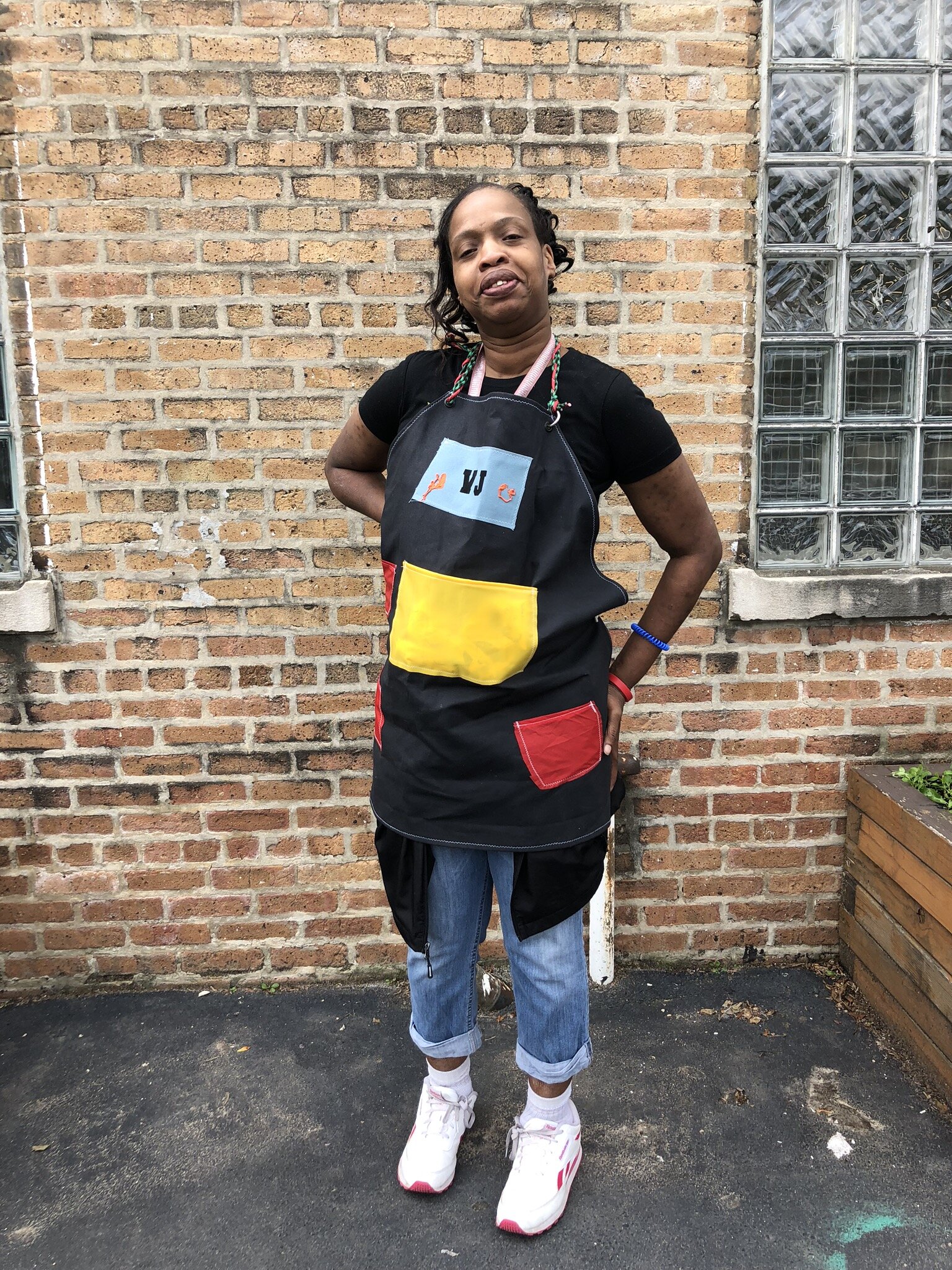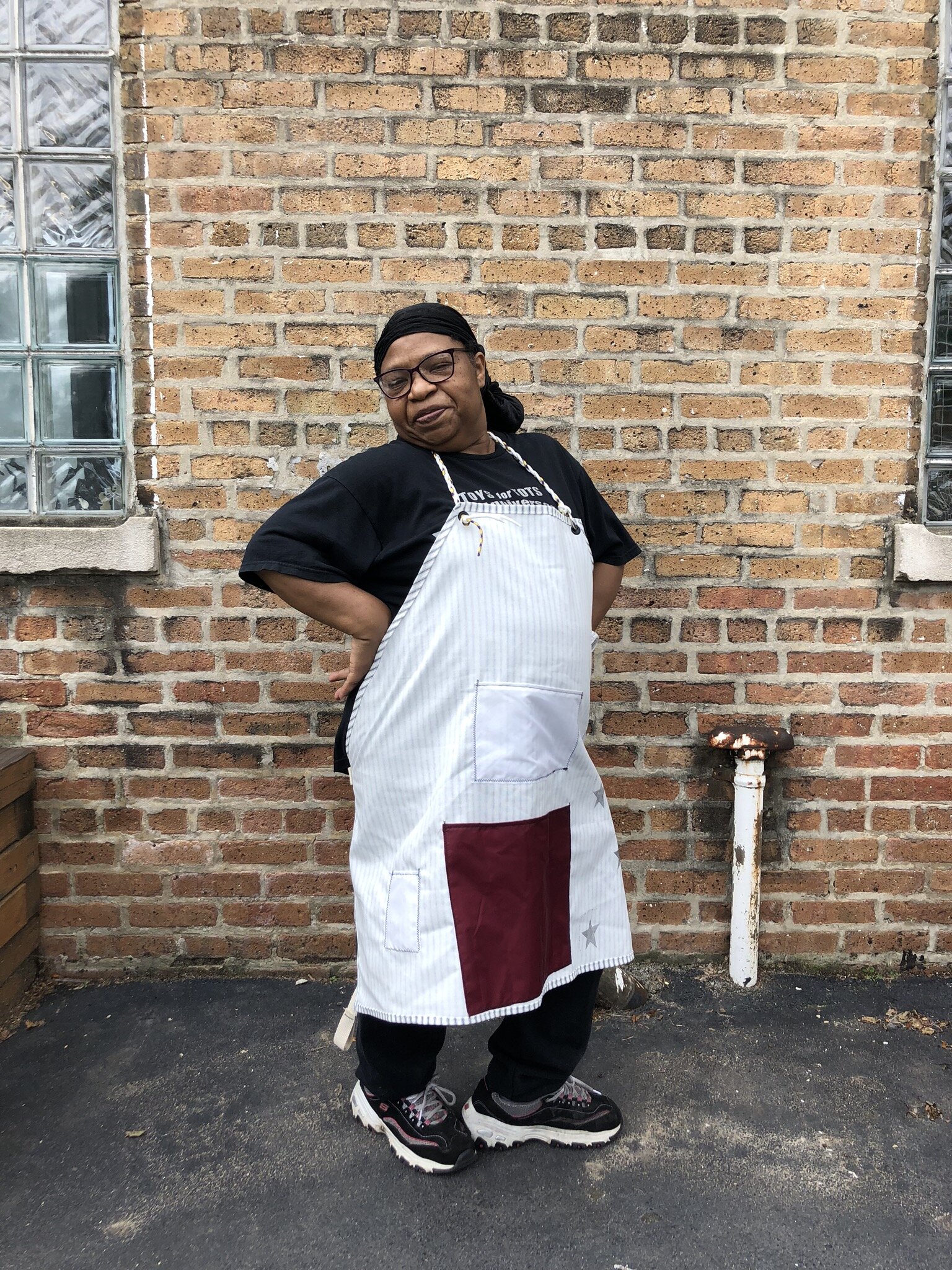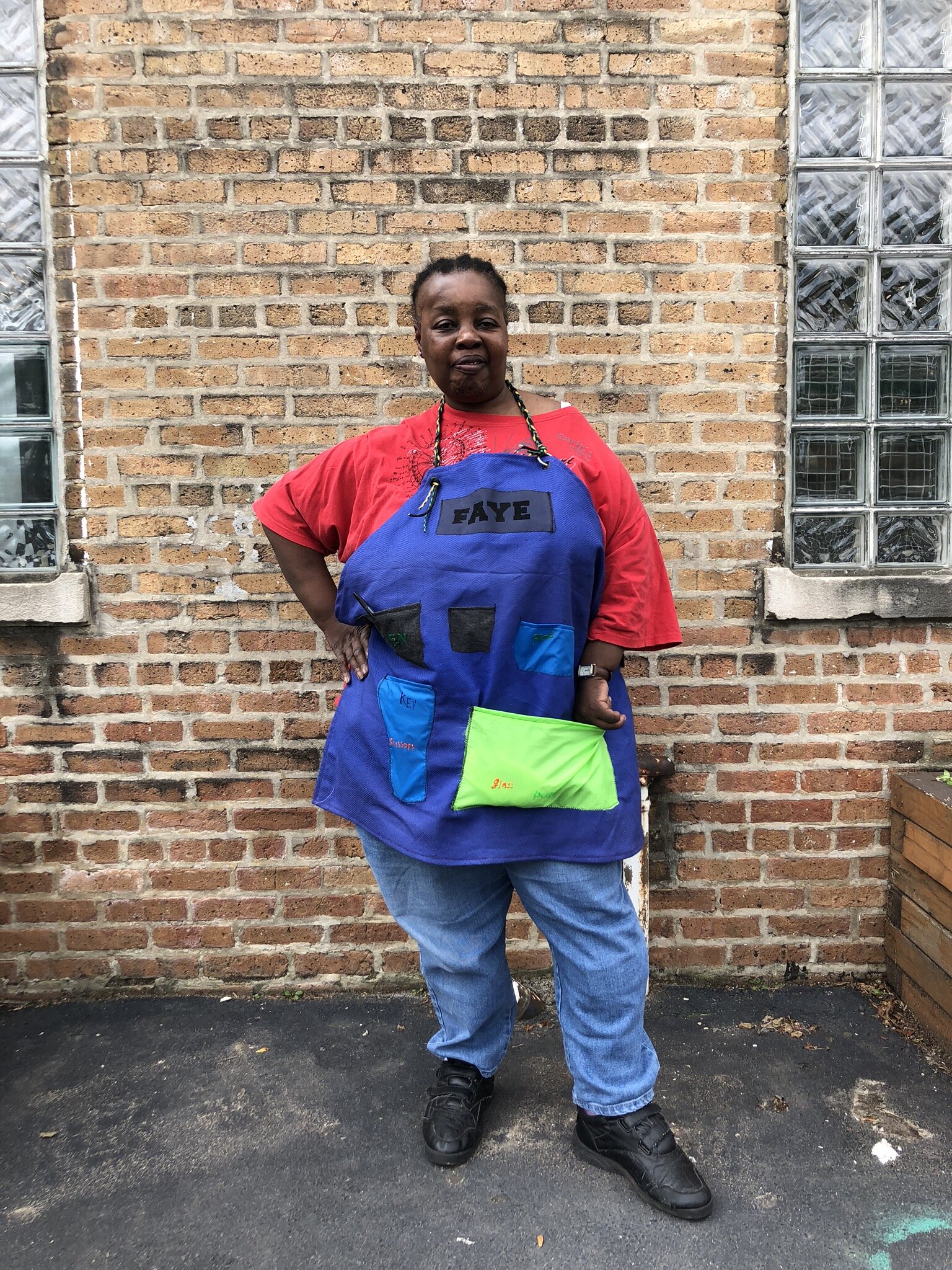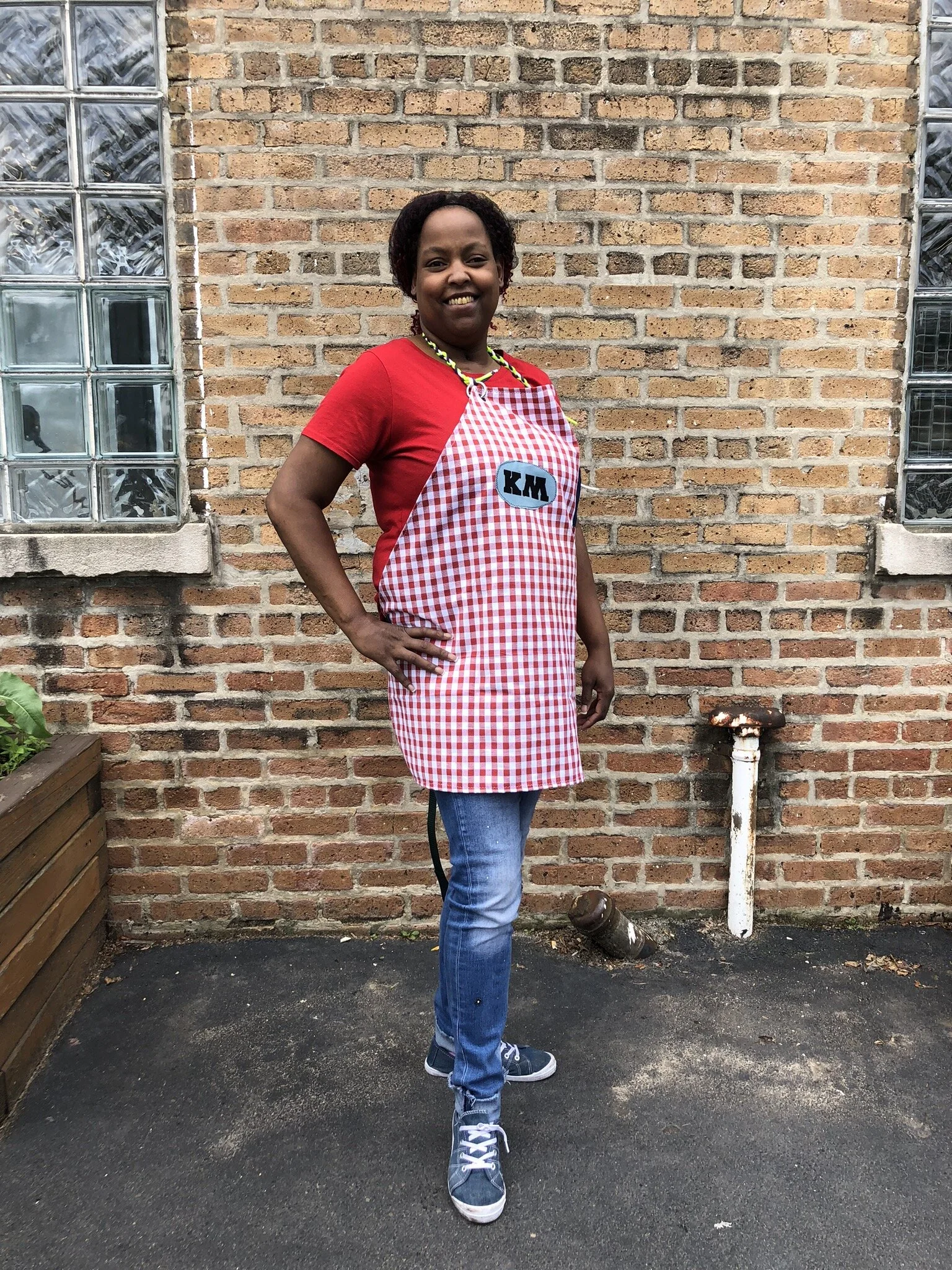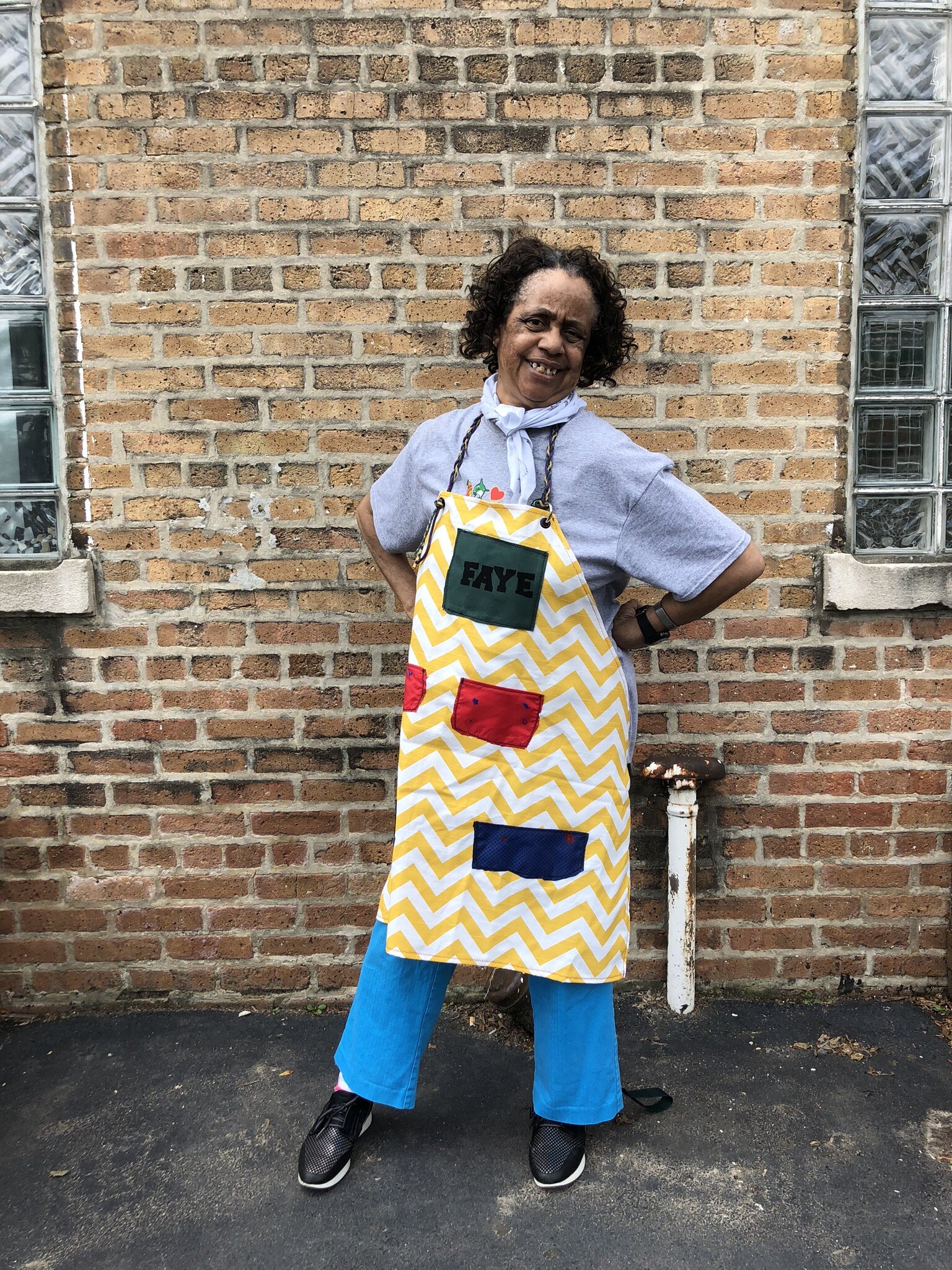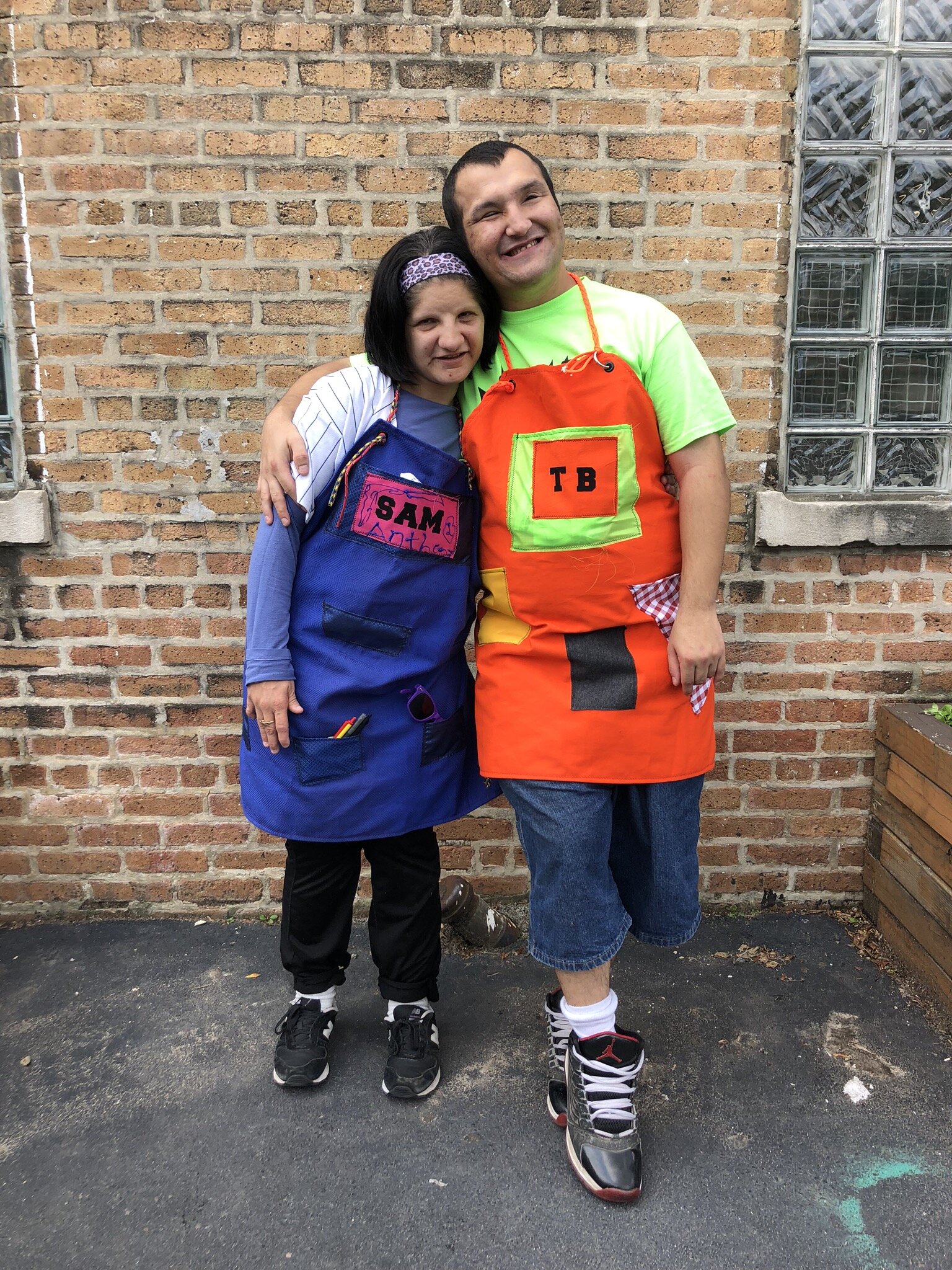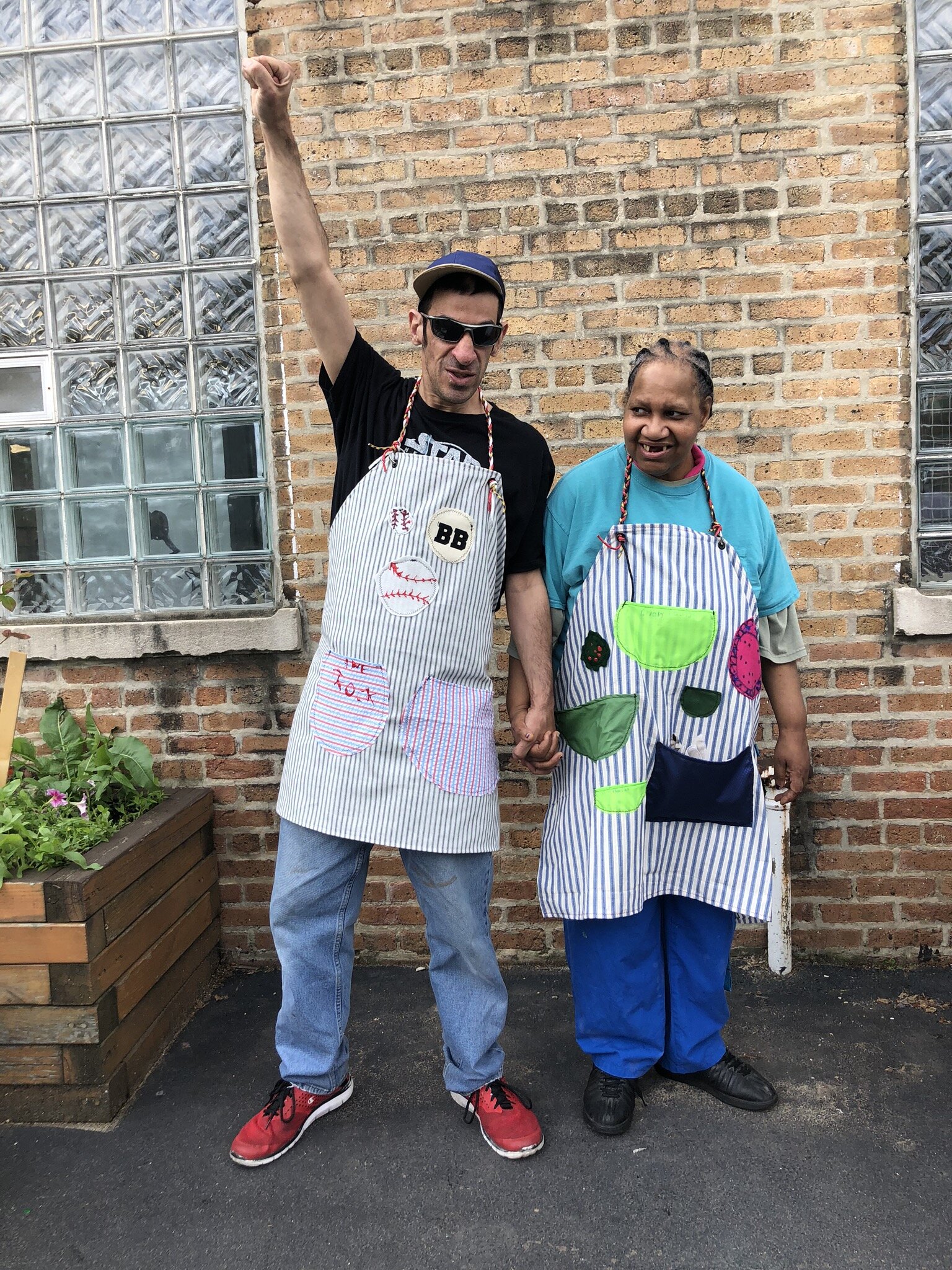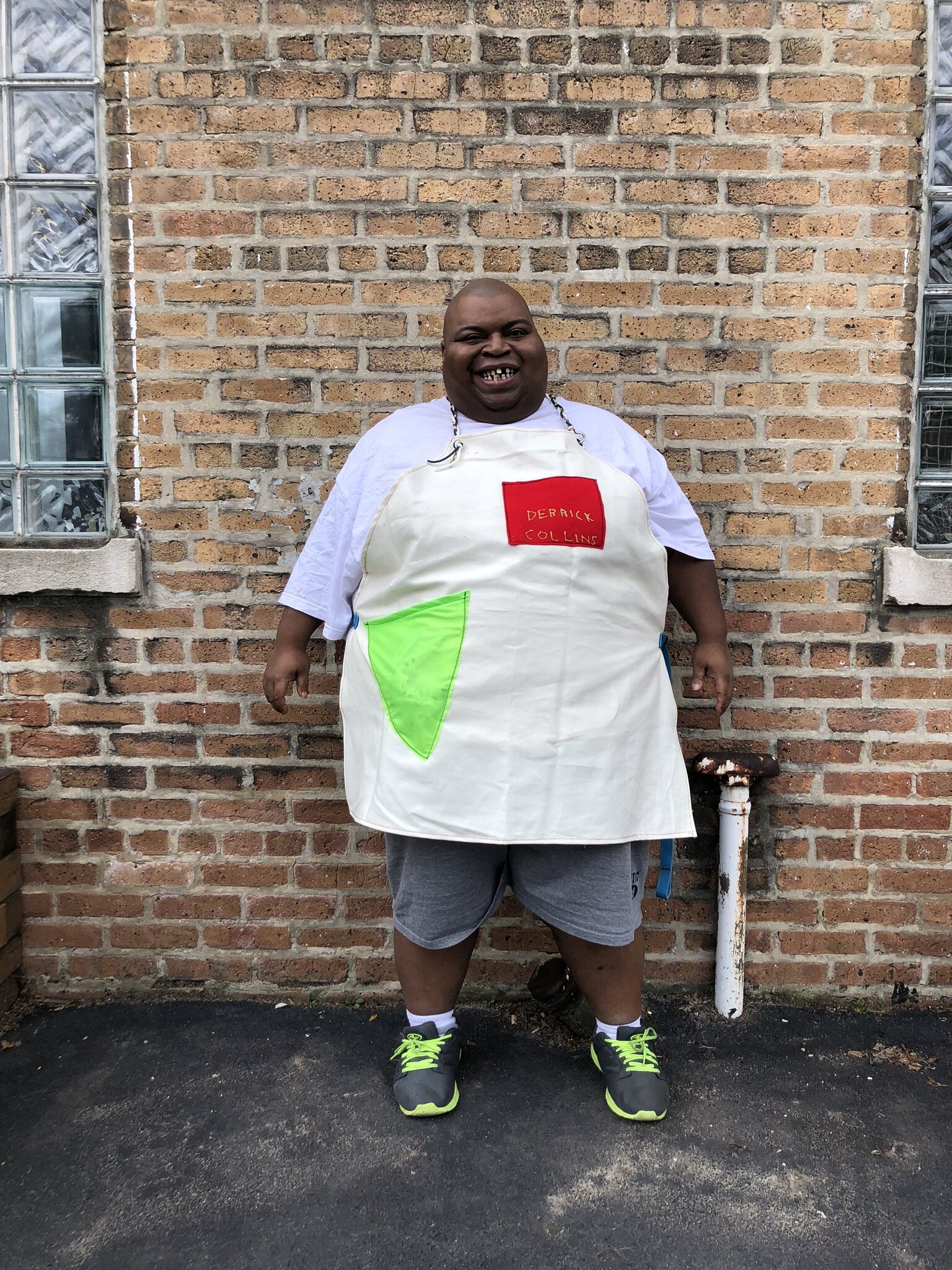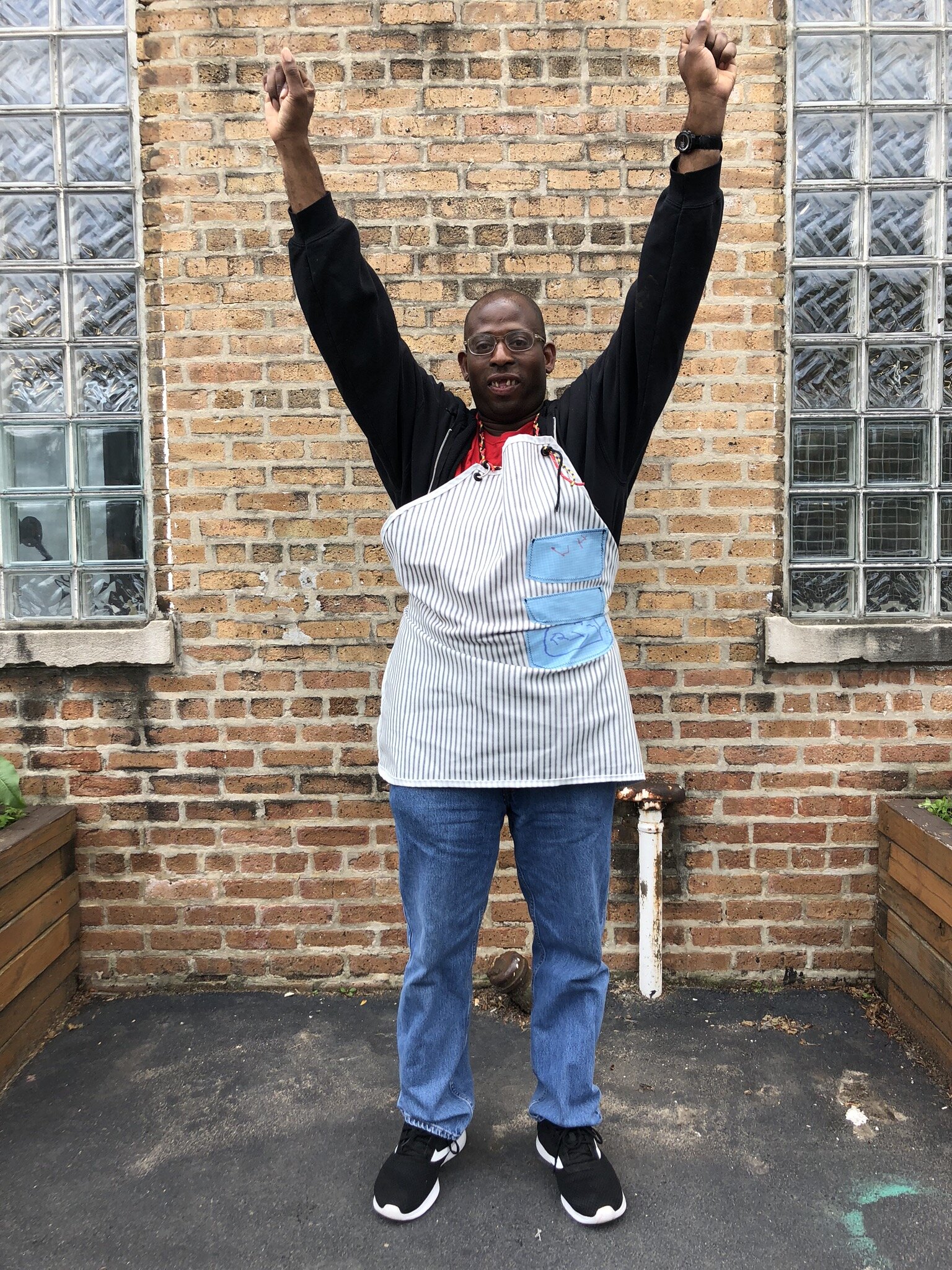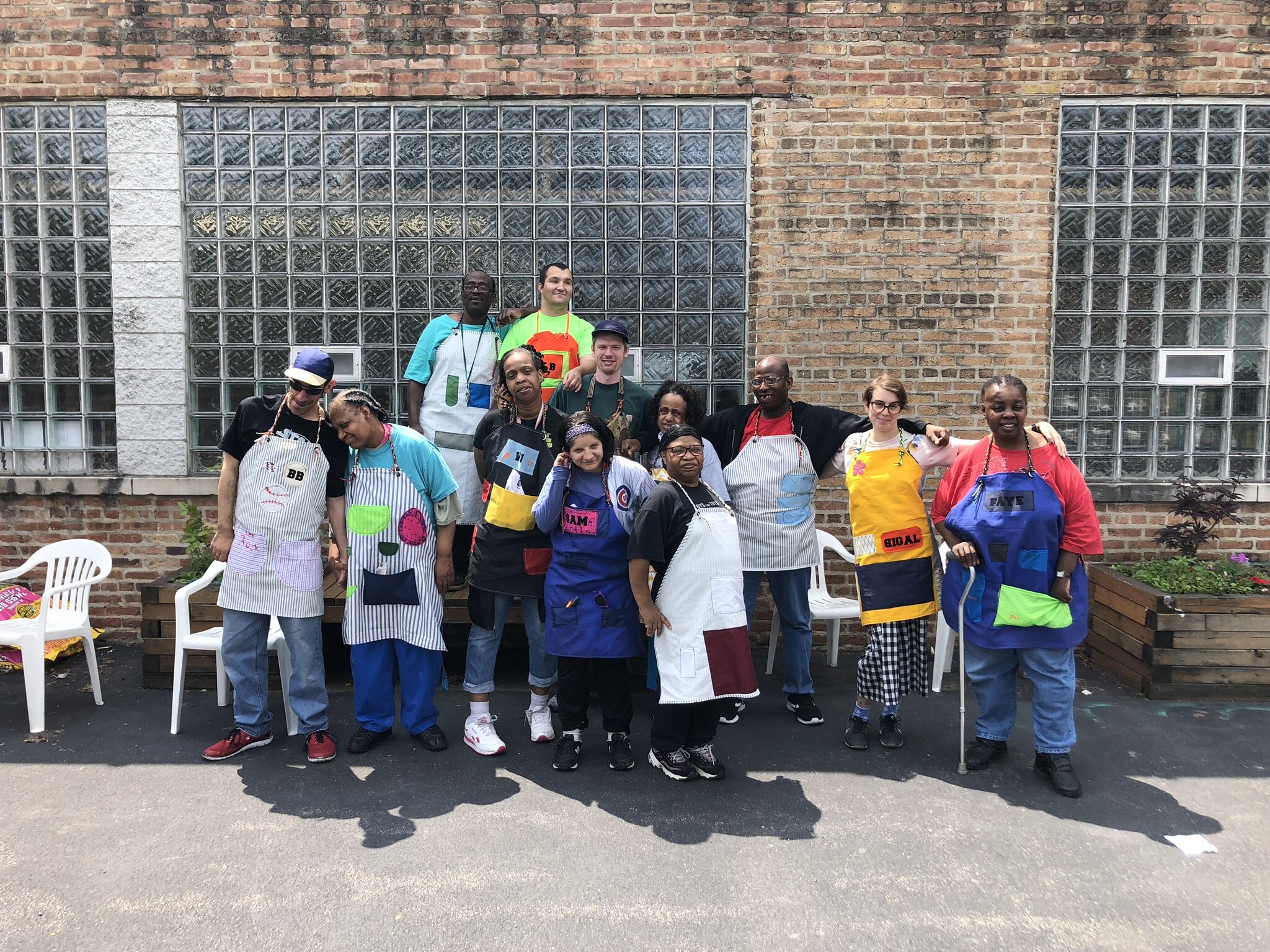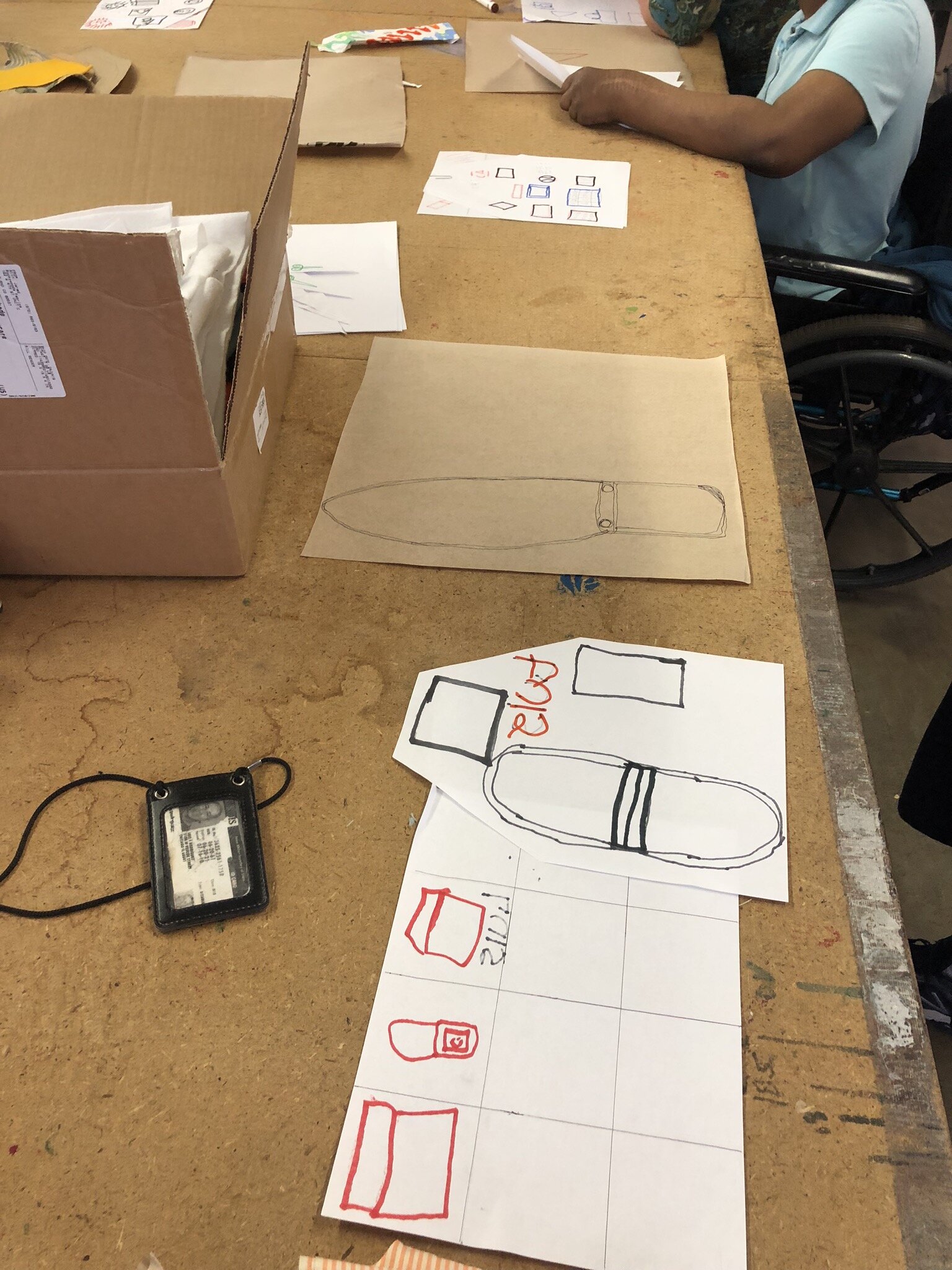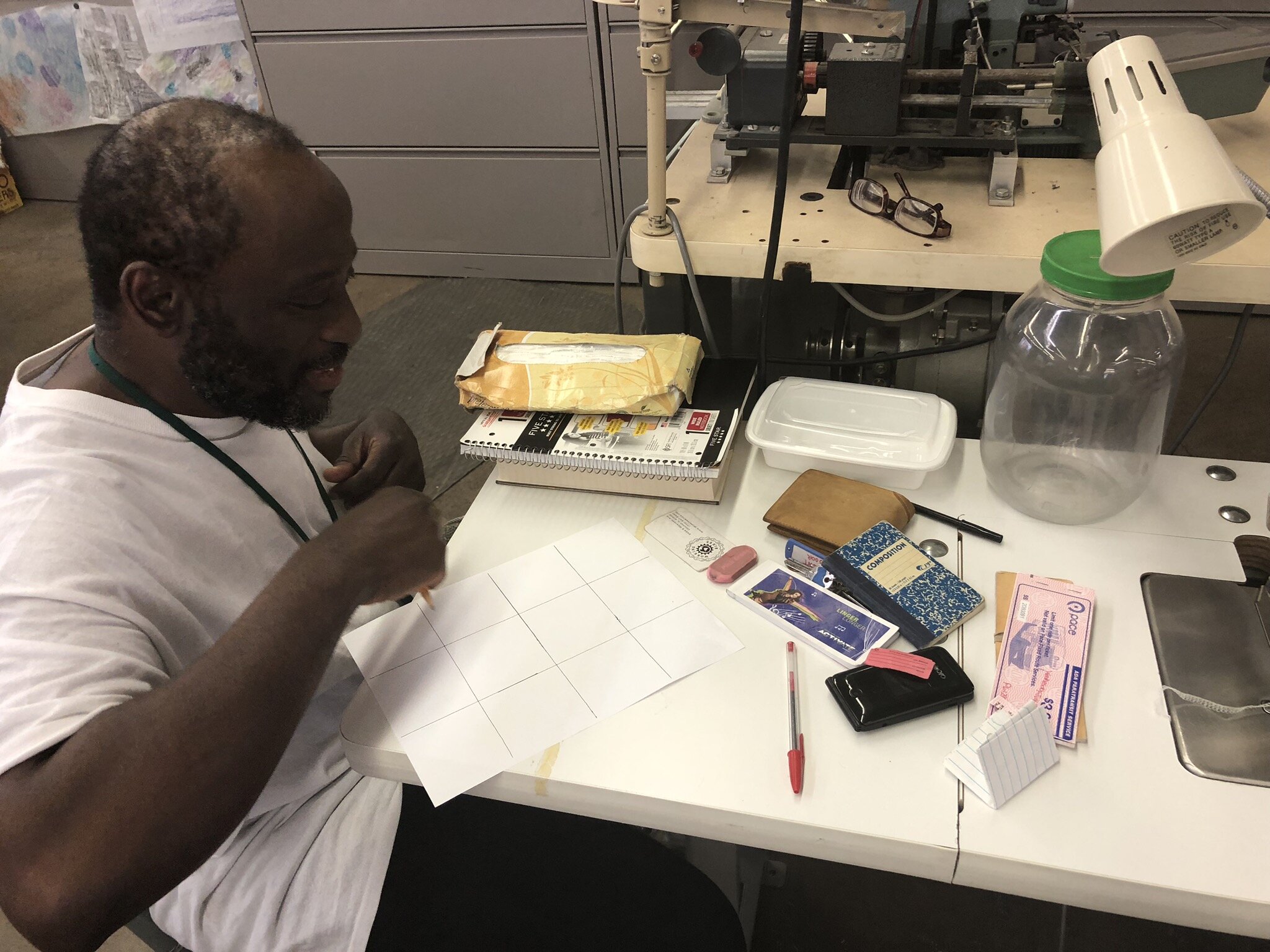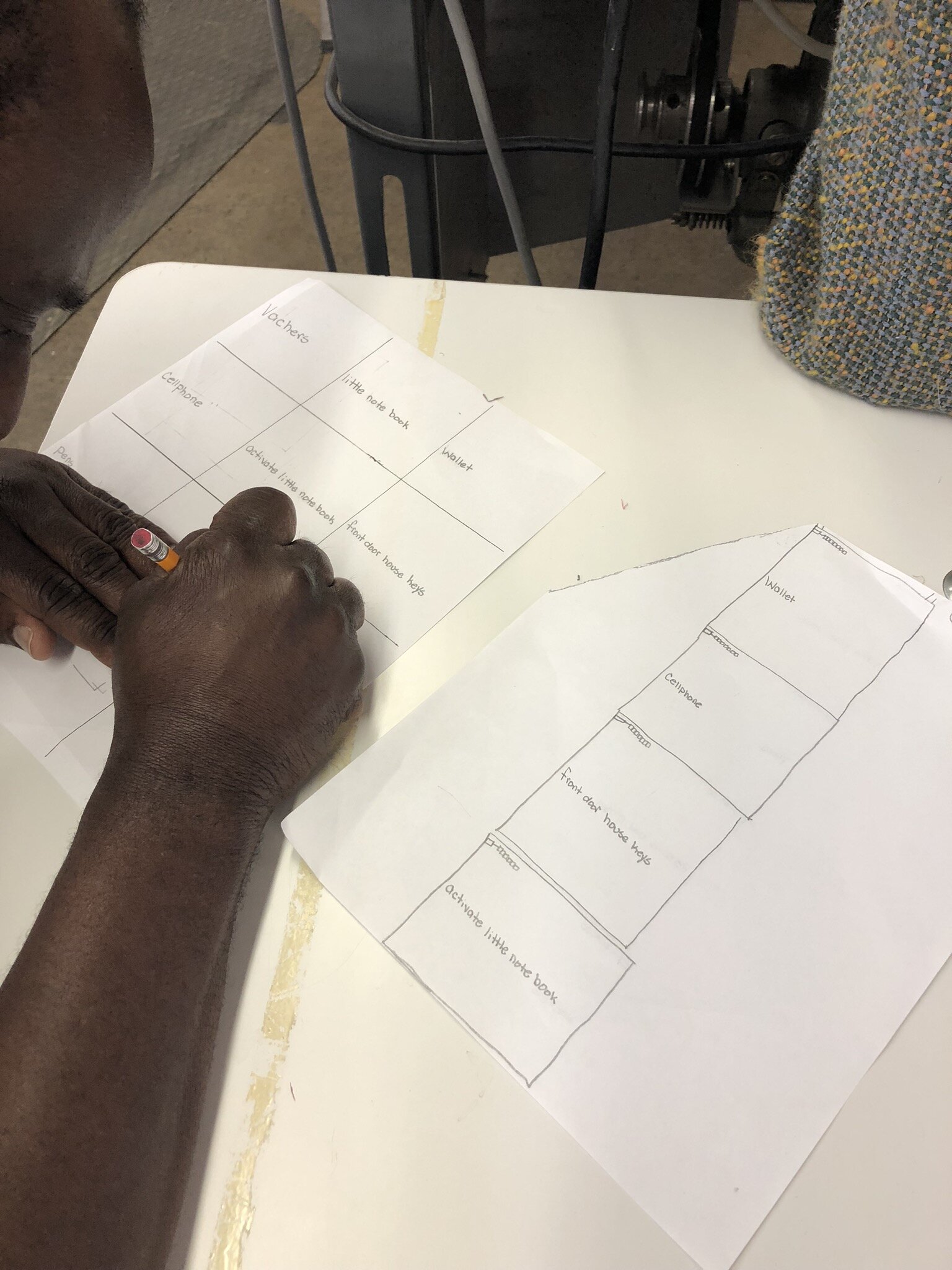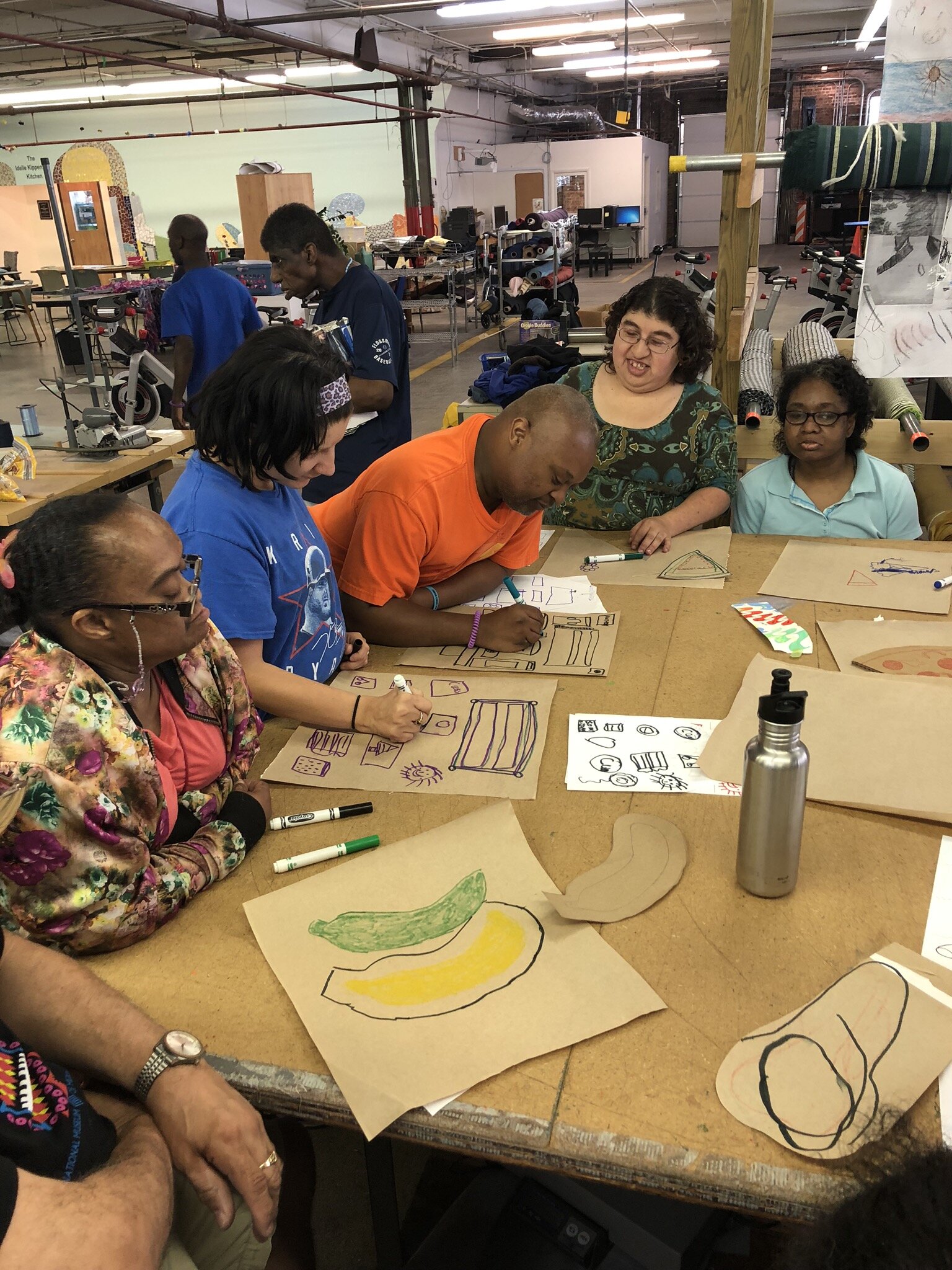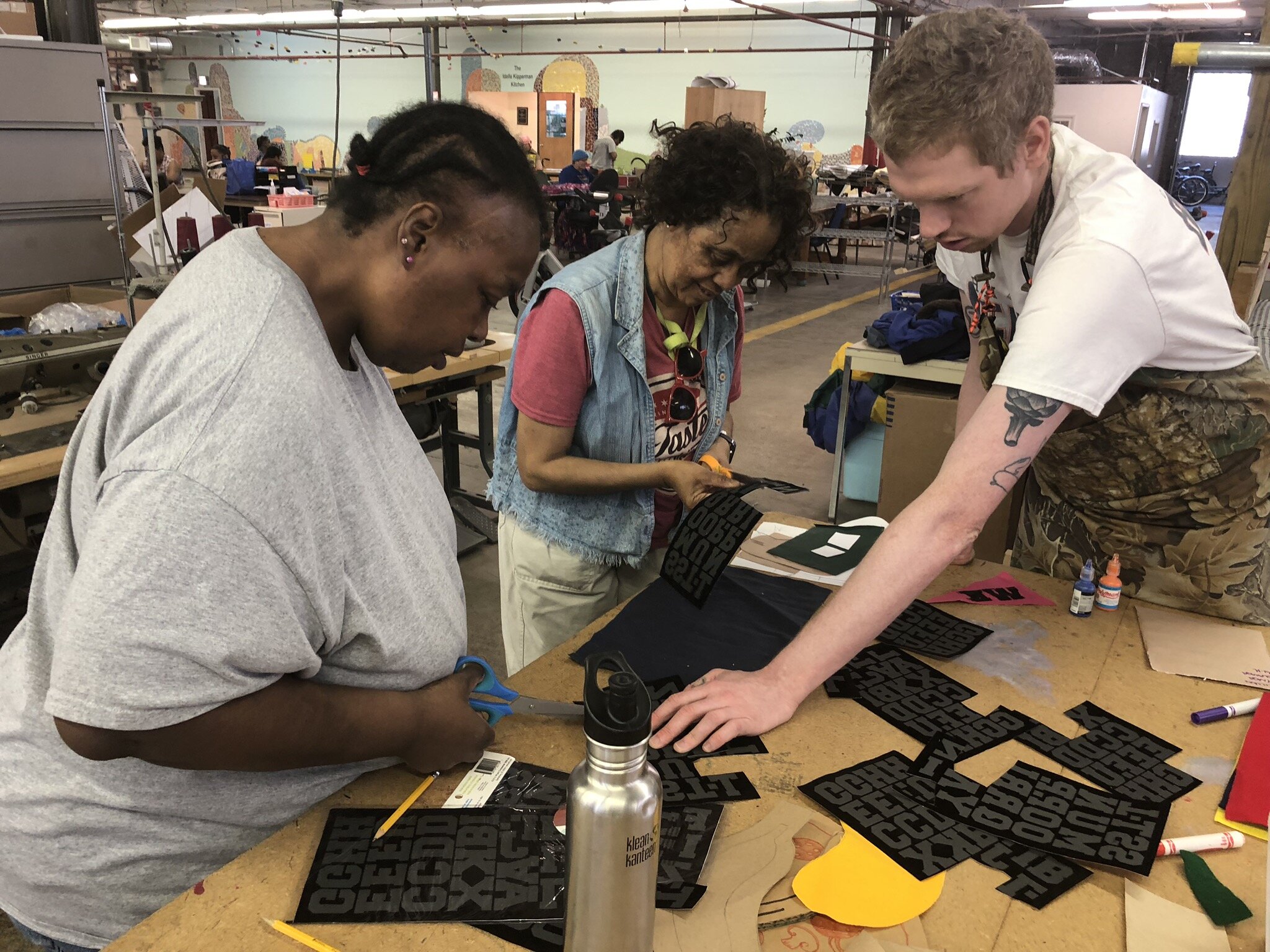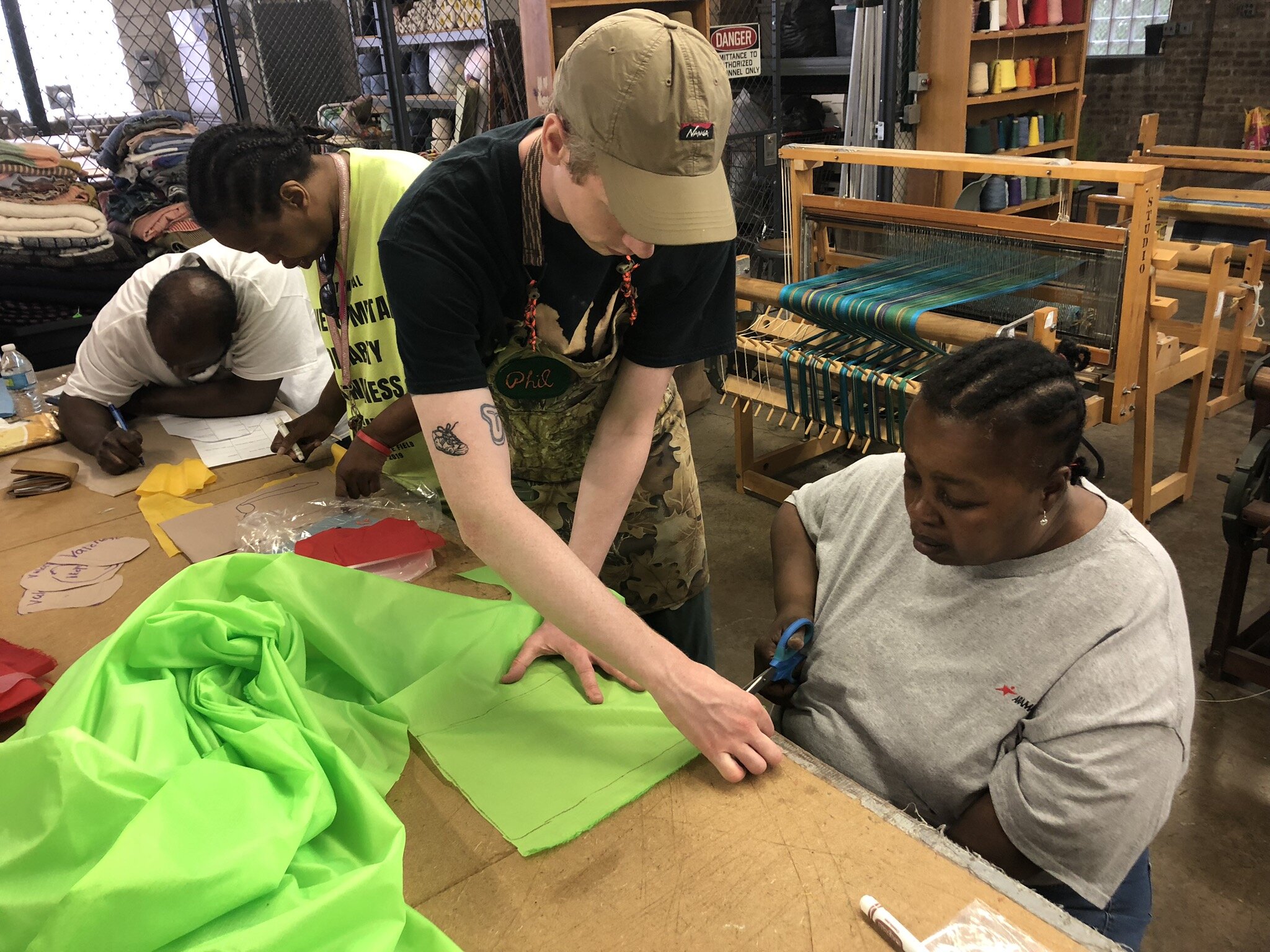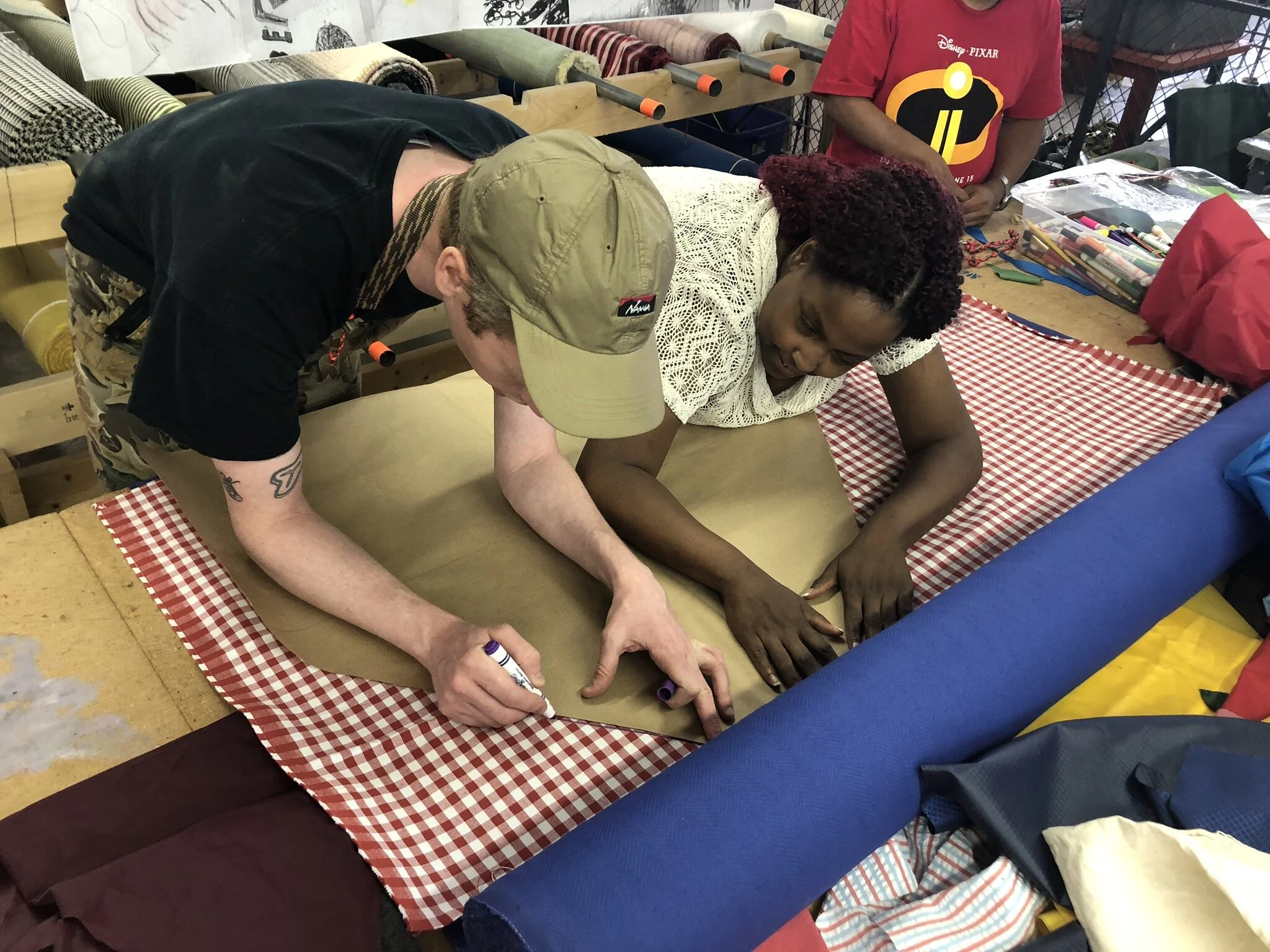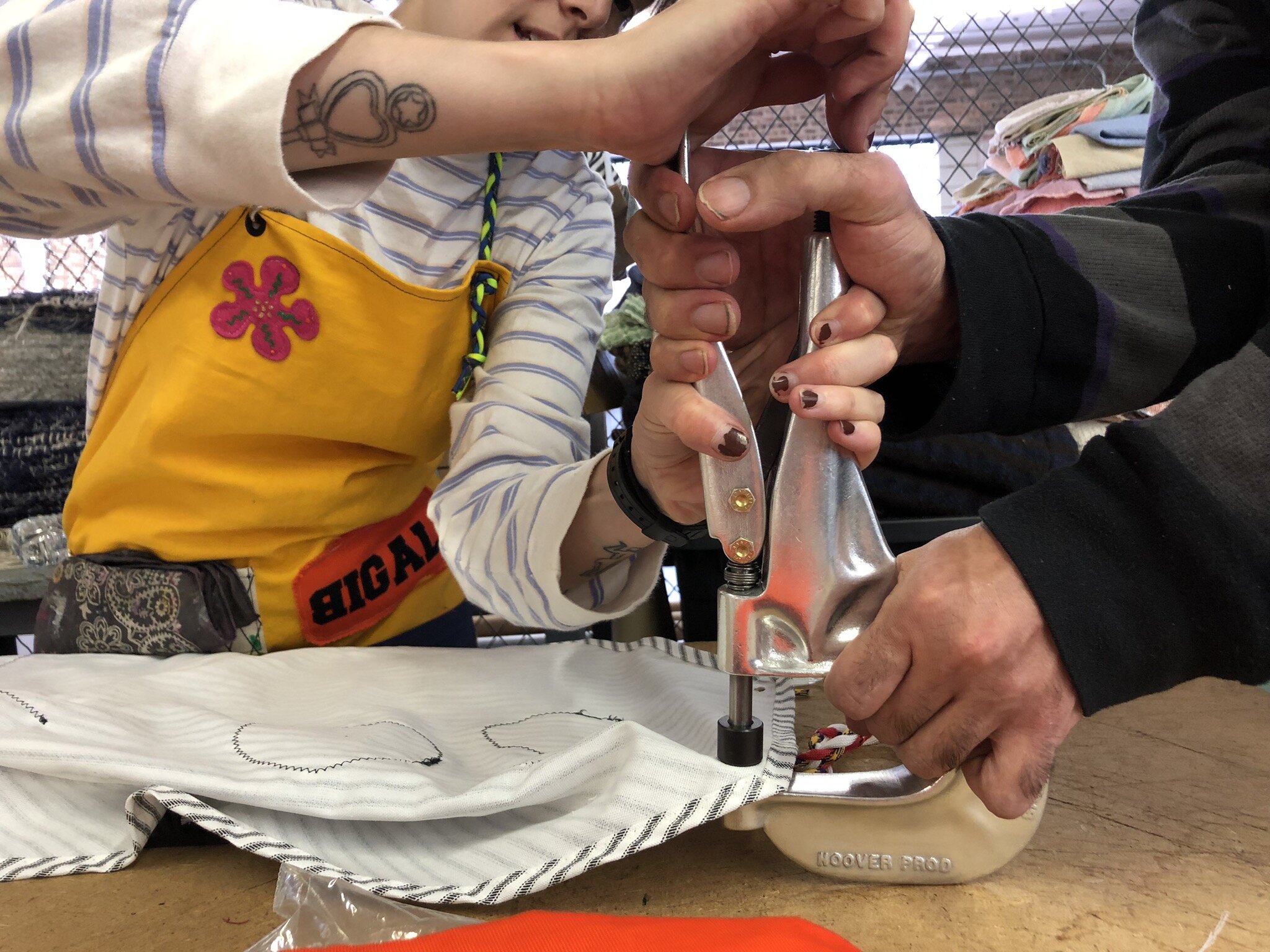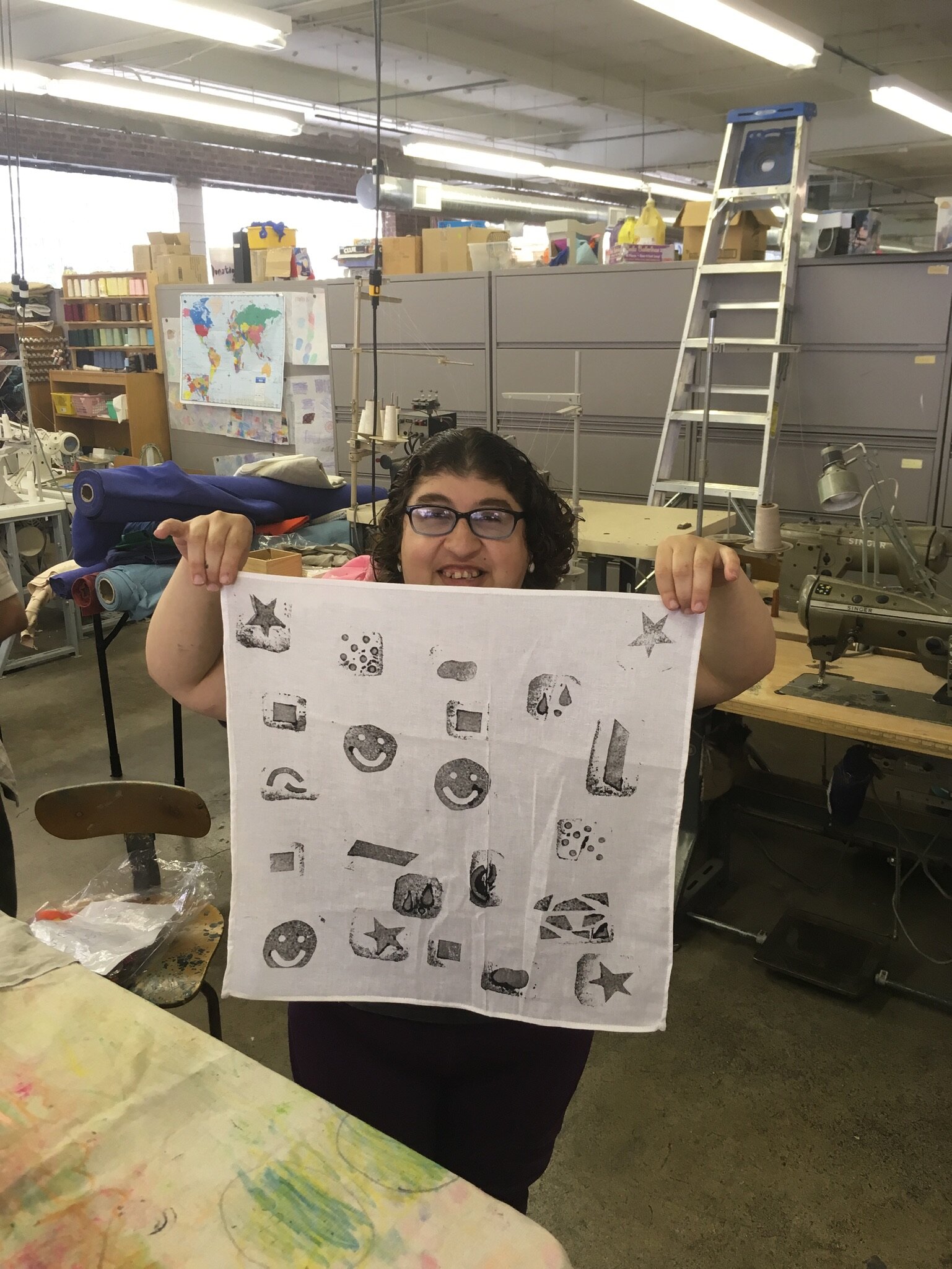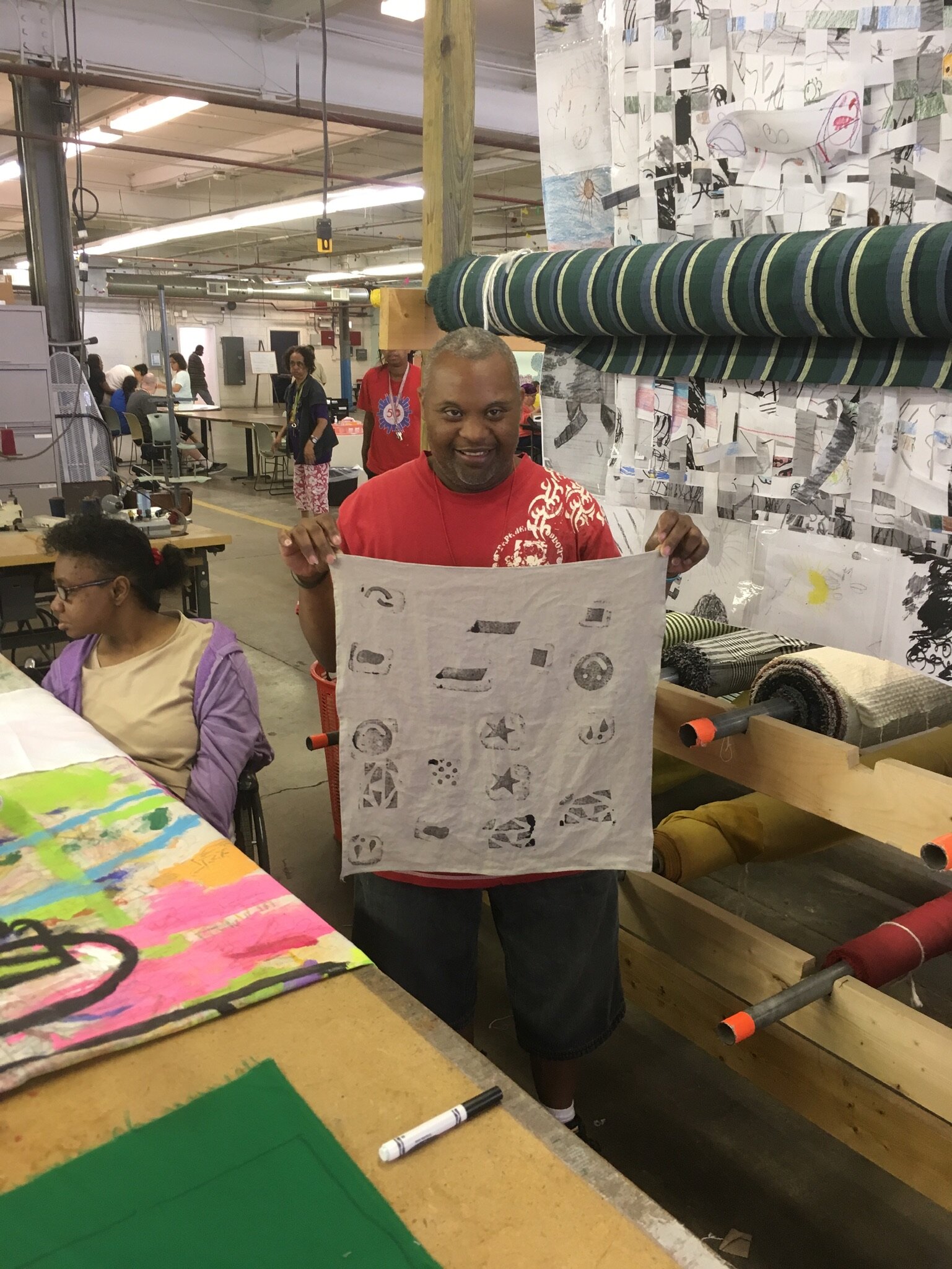Alyssa Piro is a multidisciplinary visual artist based in Philadelphia. Phil Schade designs and makes bags and accessories in Chicago for his brand 1733. They have previously collaborated on a collection of bags, Vacationland, that incorporated printed, dyed, painted, and embroidered fabrics. As a duo, Phil and Alyssa’s skills, interests, aesthetics and vocabulary converge in their overlapping visual sensibilities and their shared attention to small, typically mundane details. They used their time at WARP to expand their work beyond products, to art objects and educational curriculum.
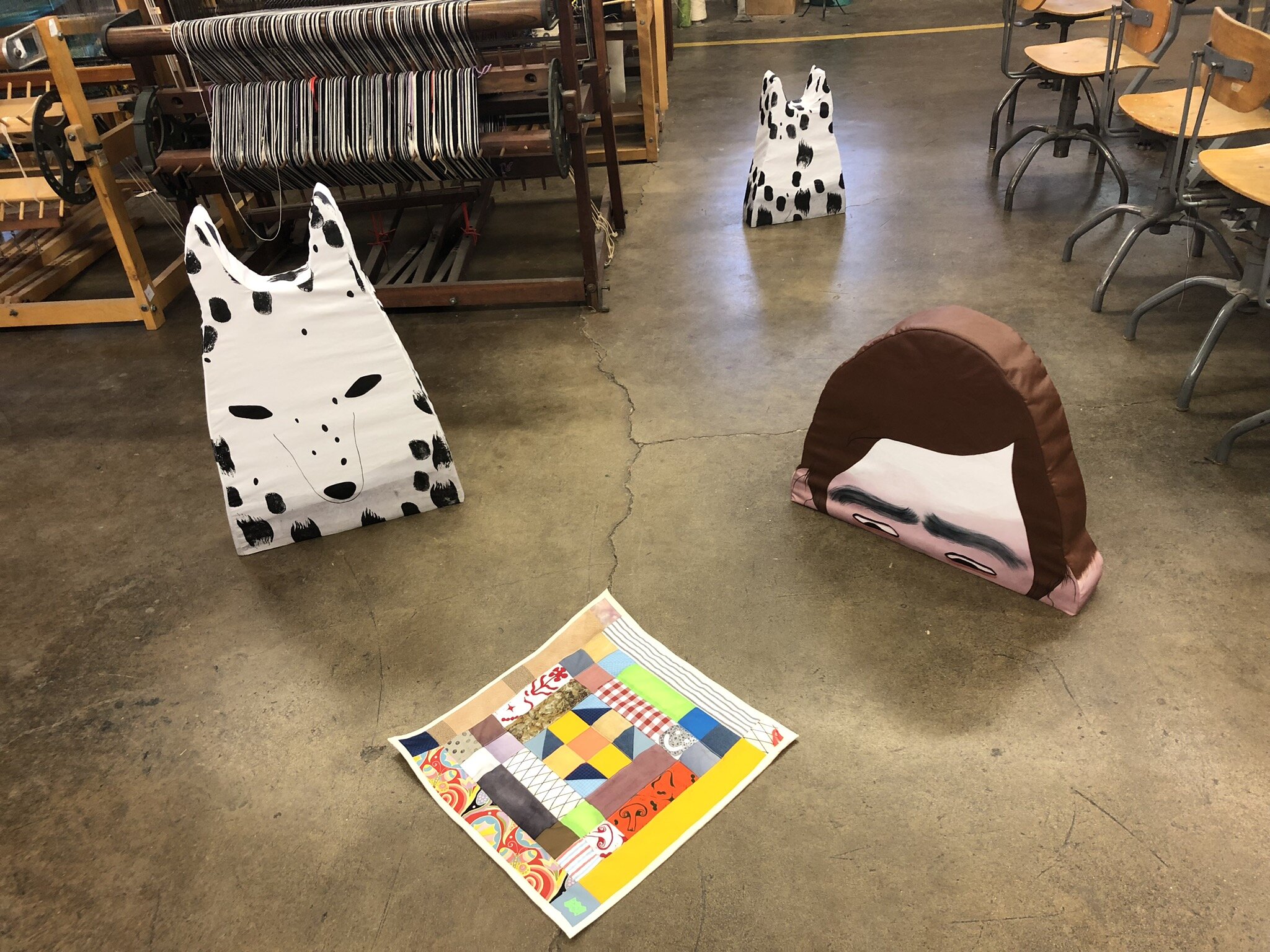
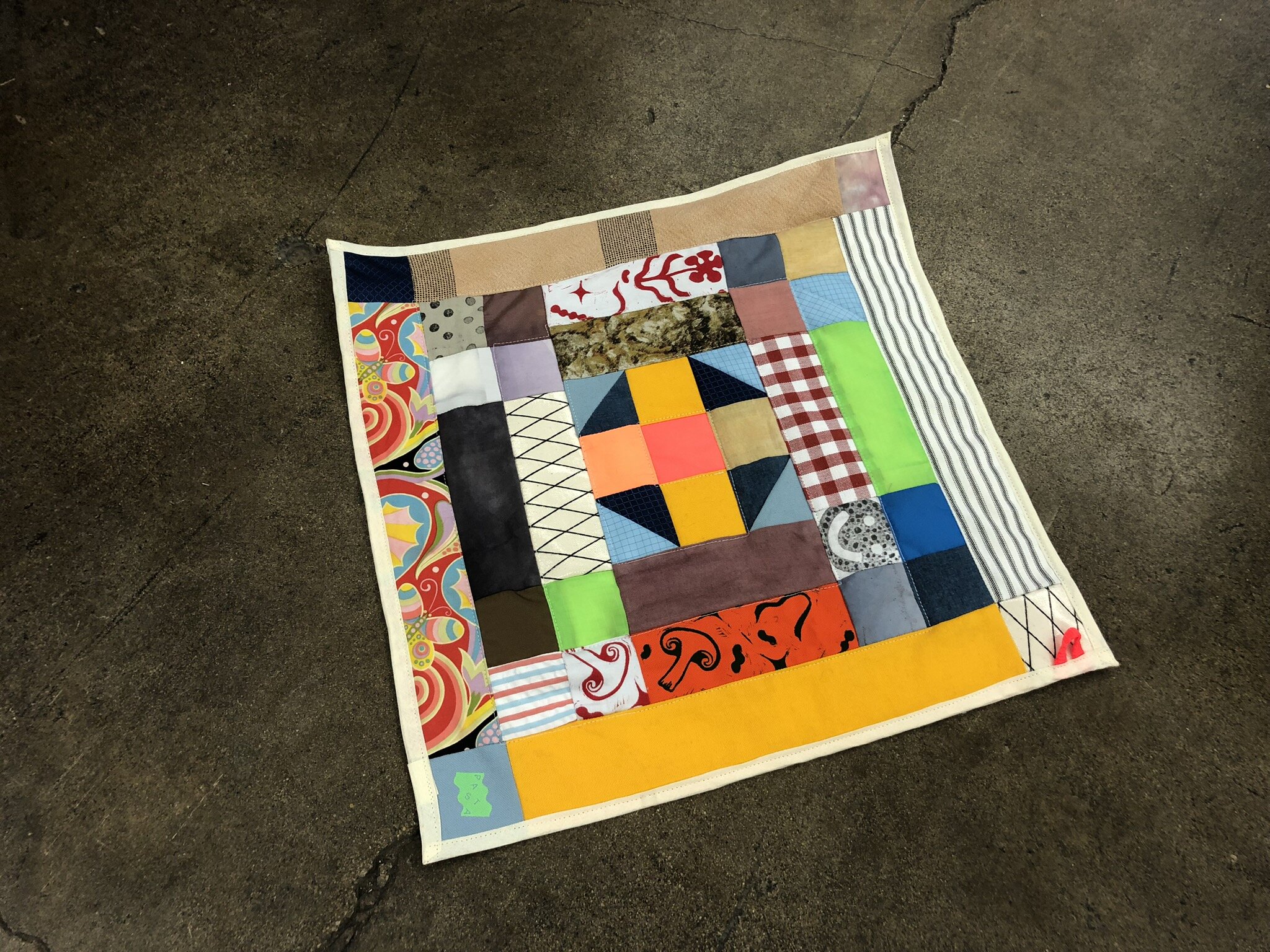
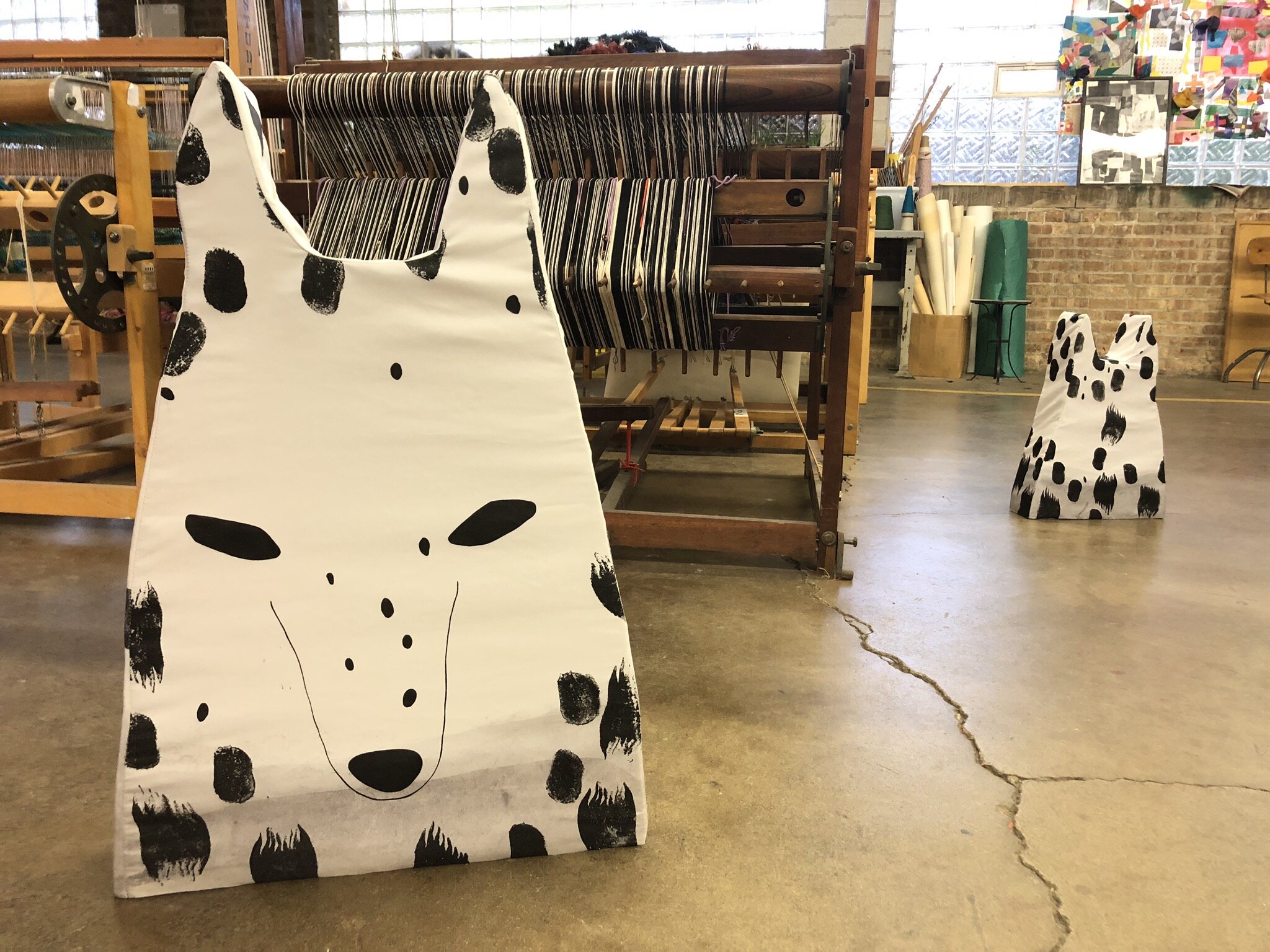
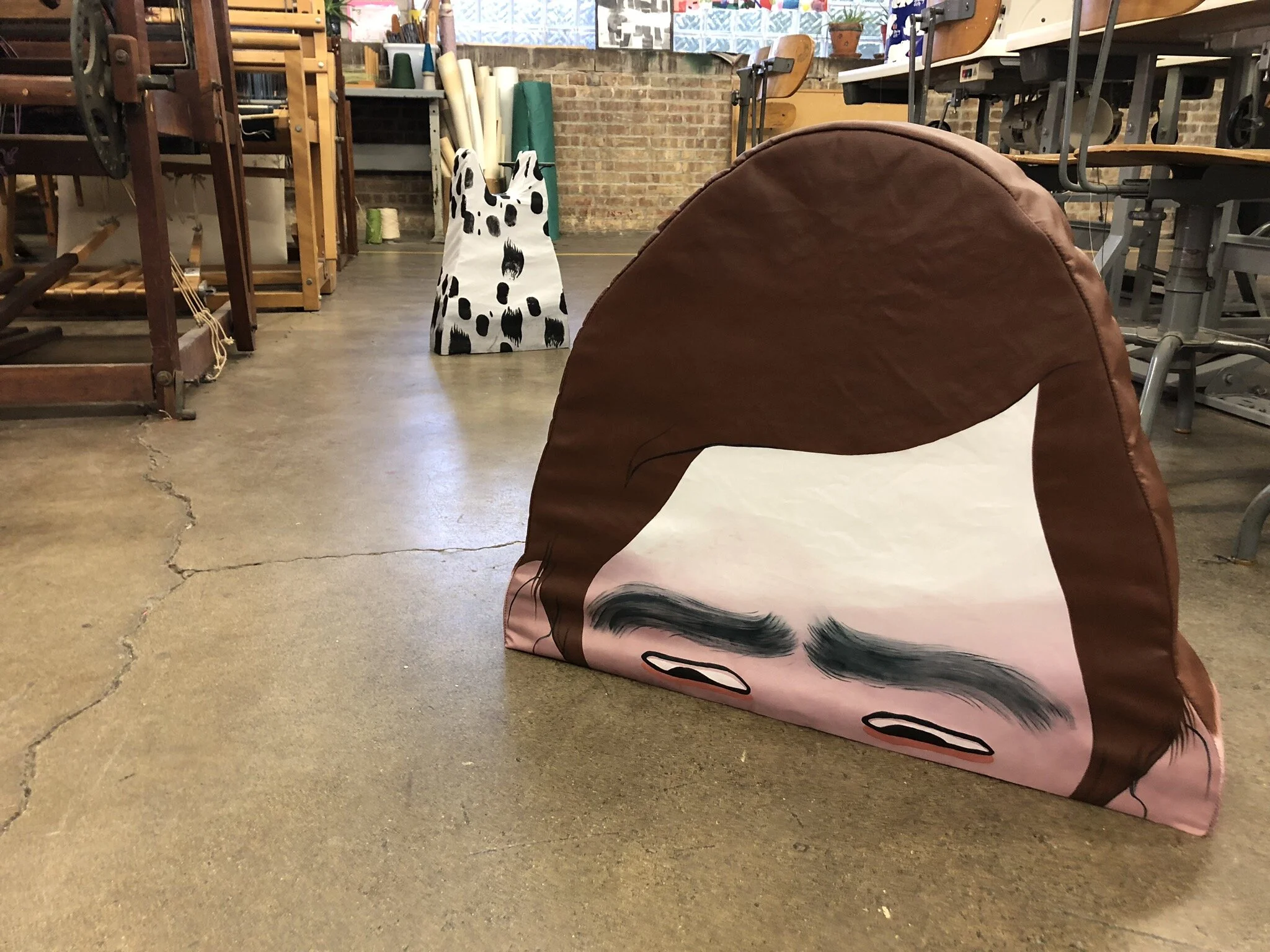
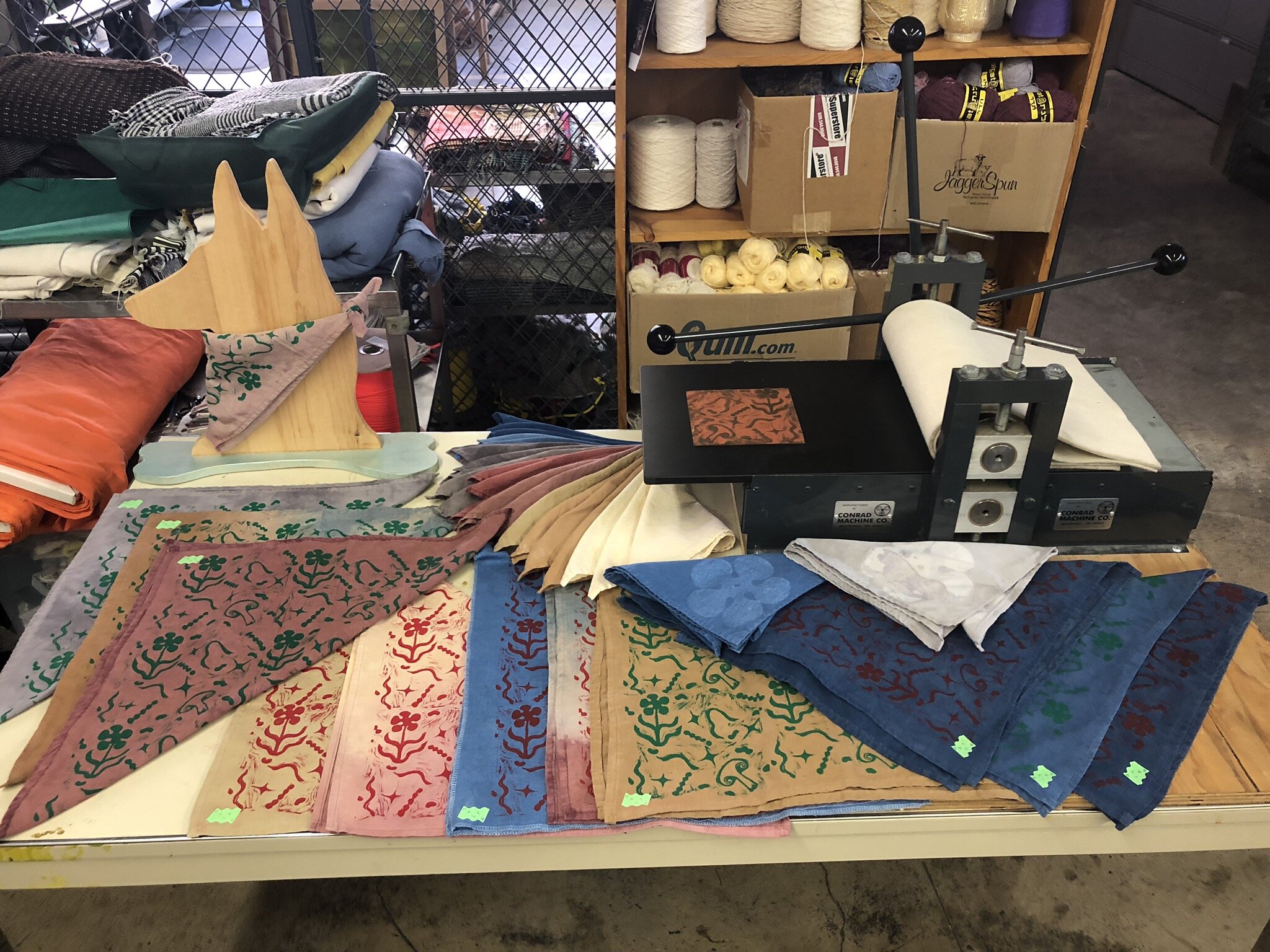
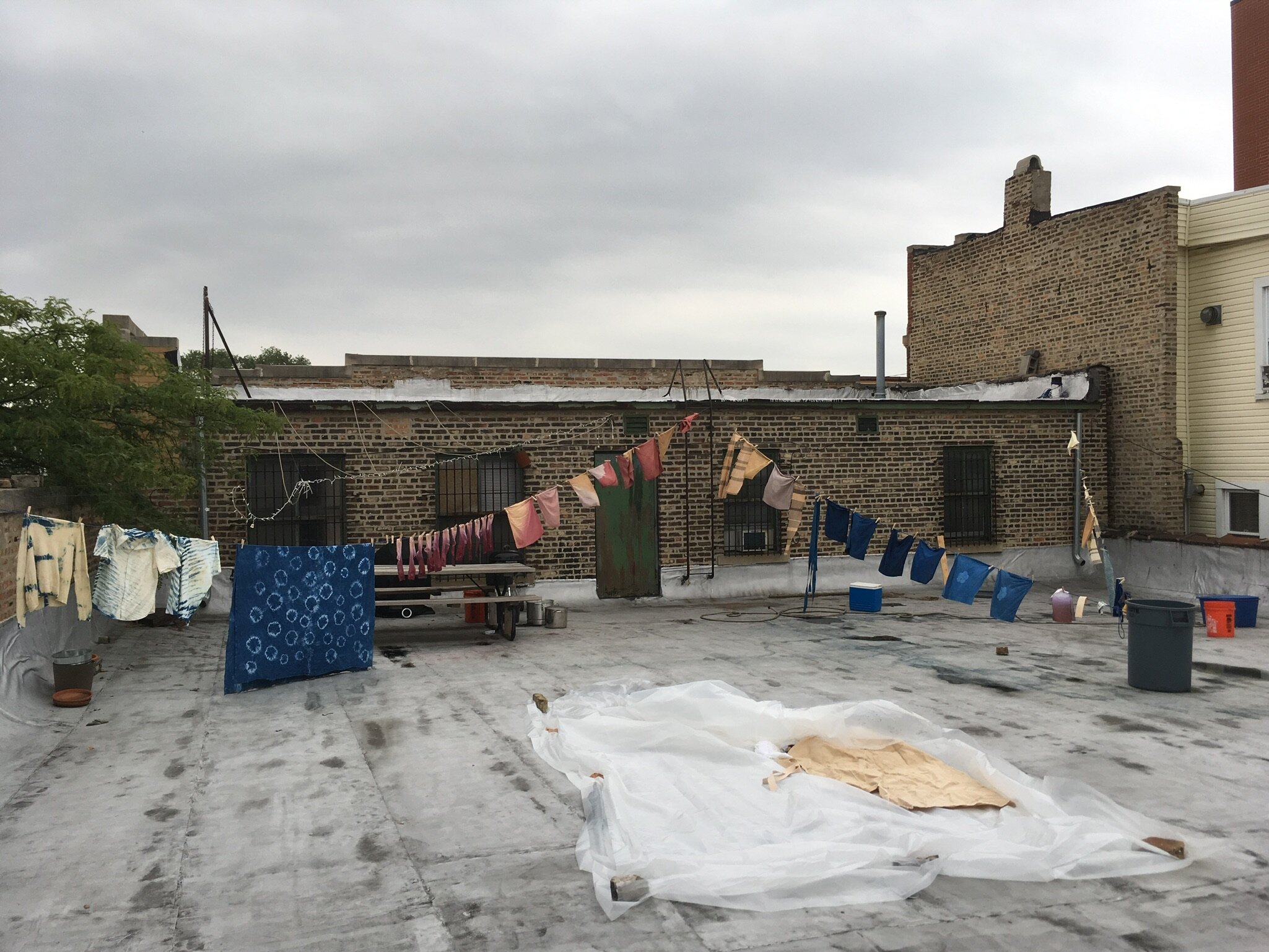

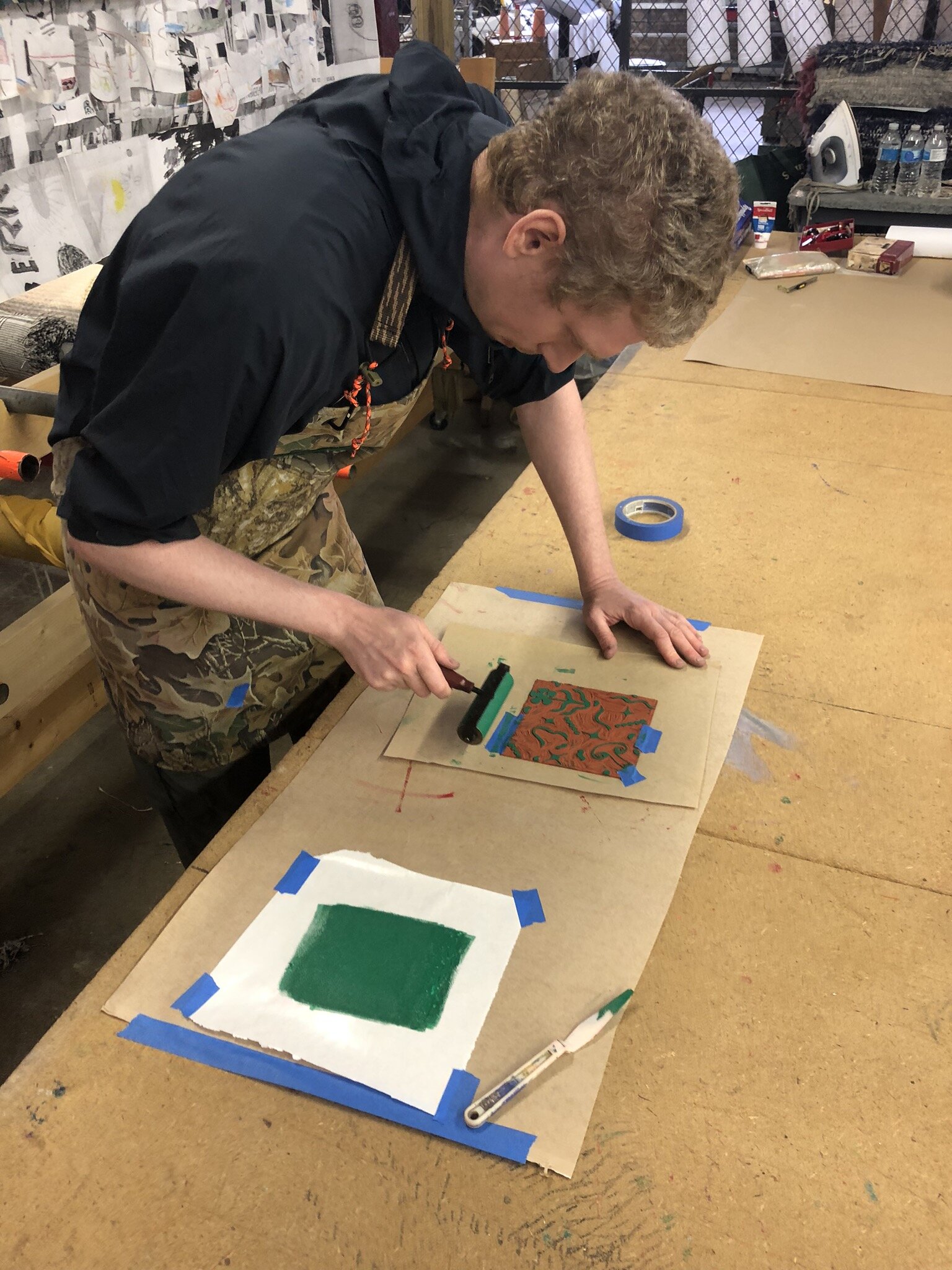
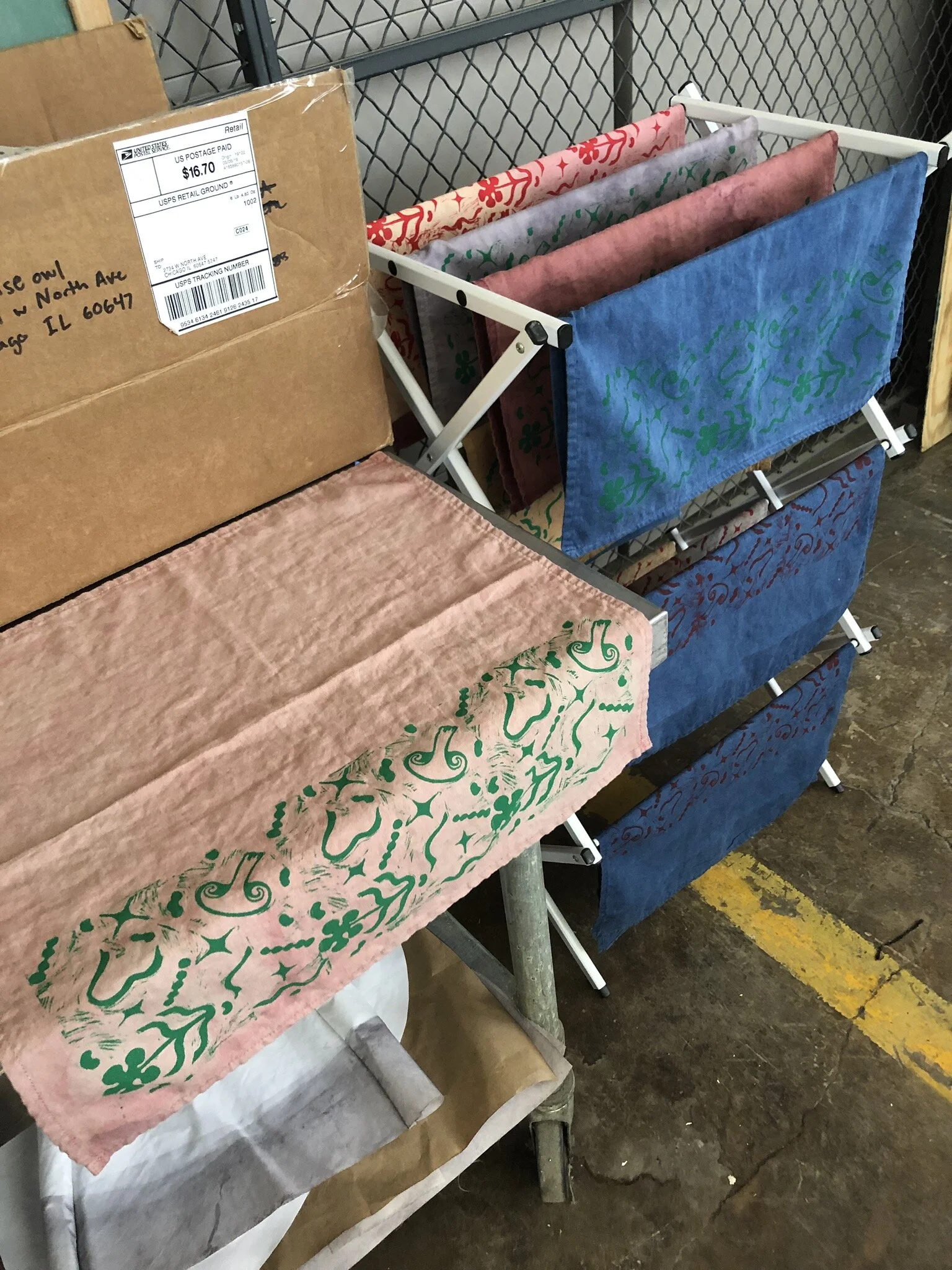
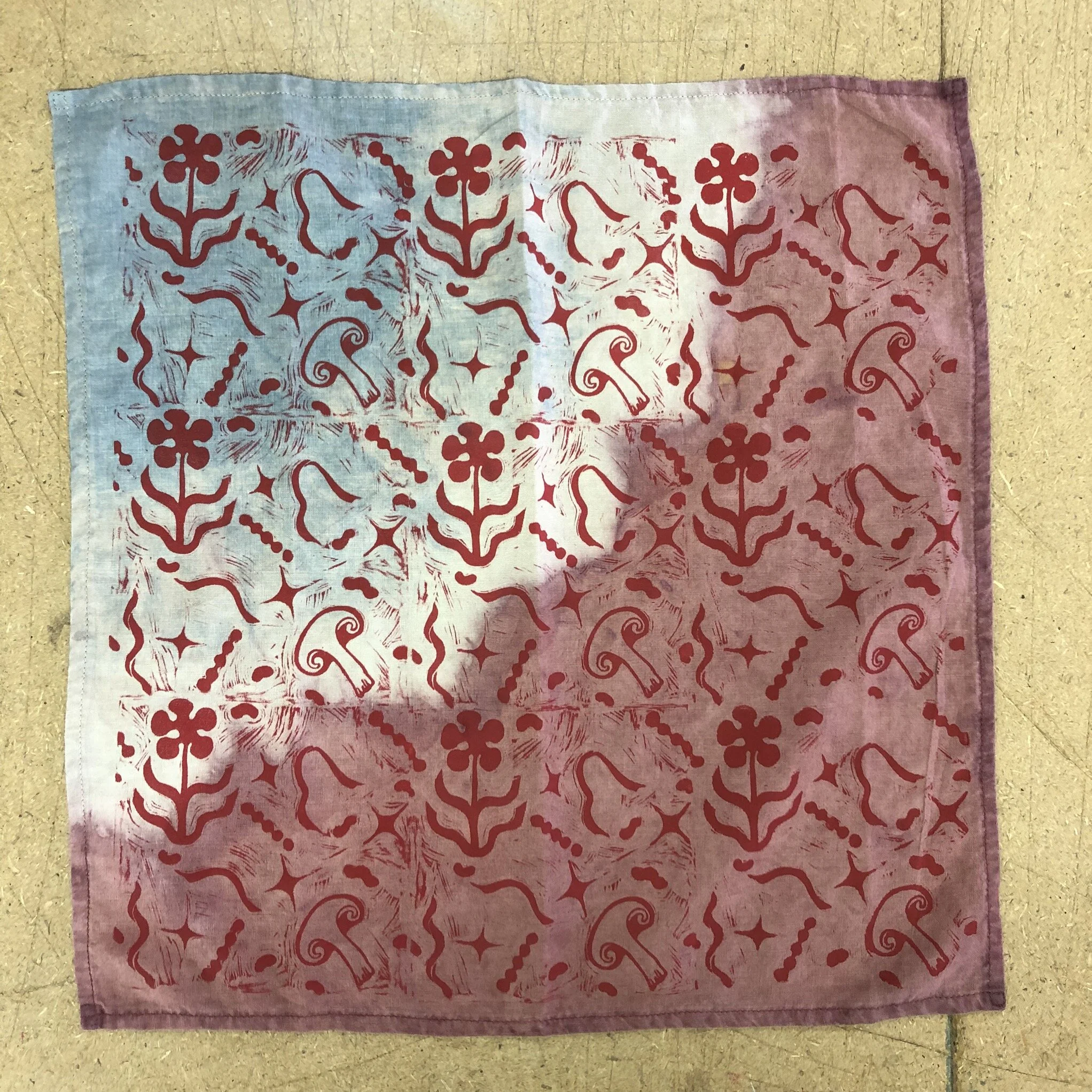
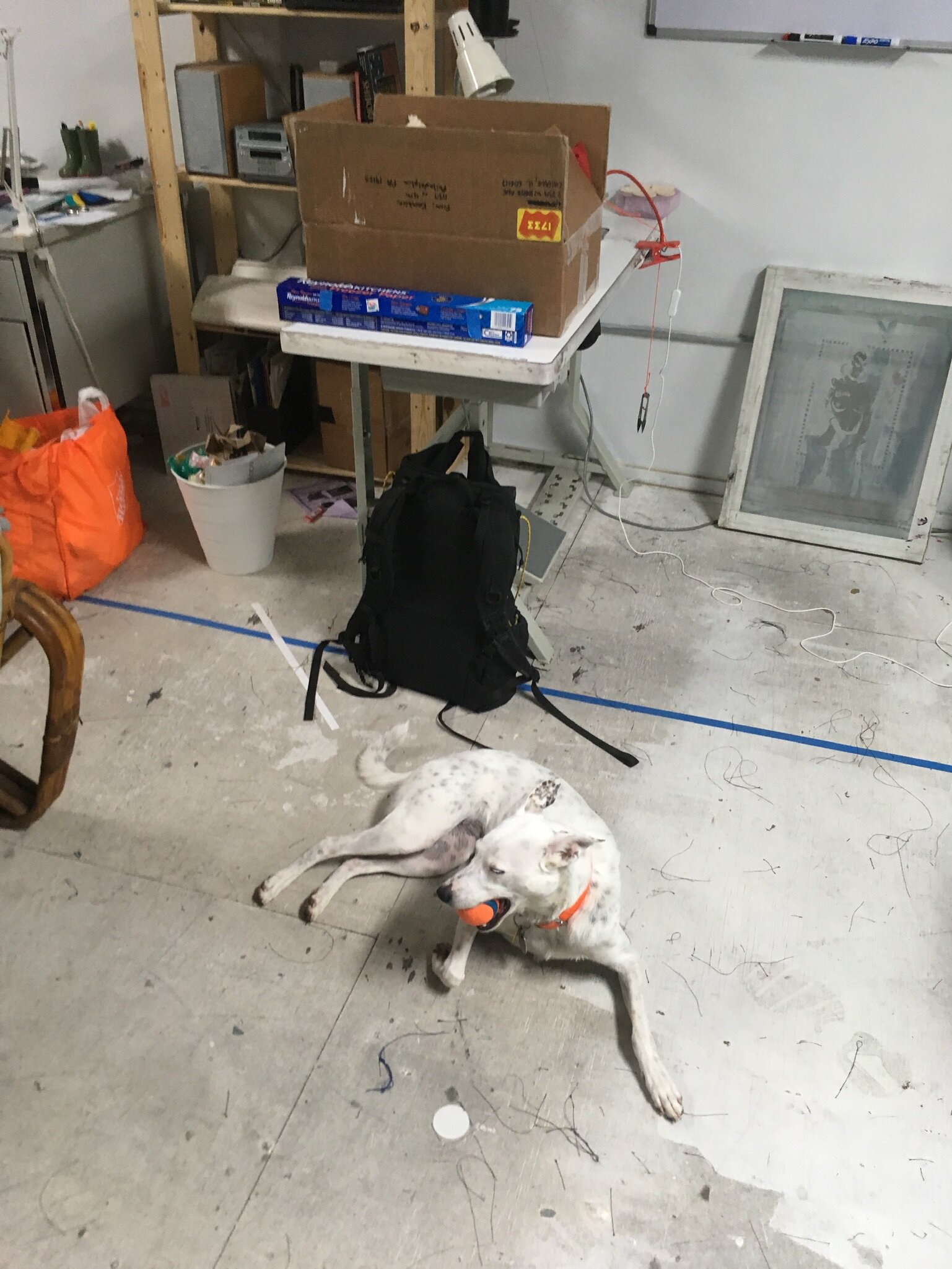

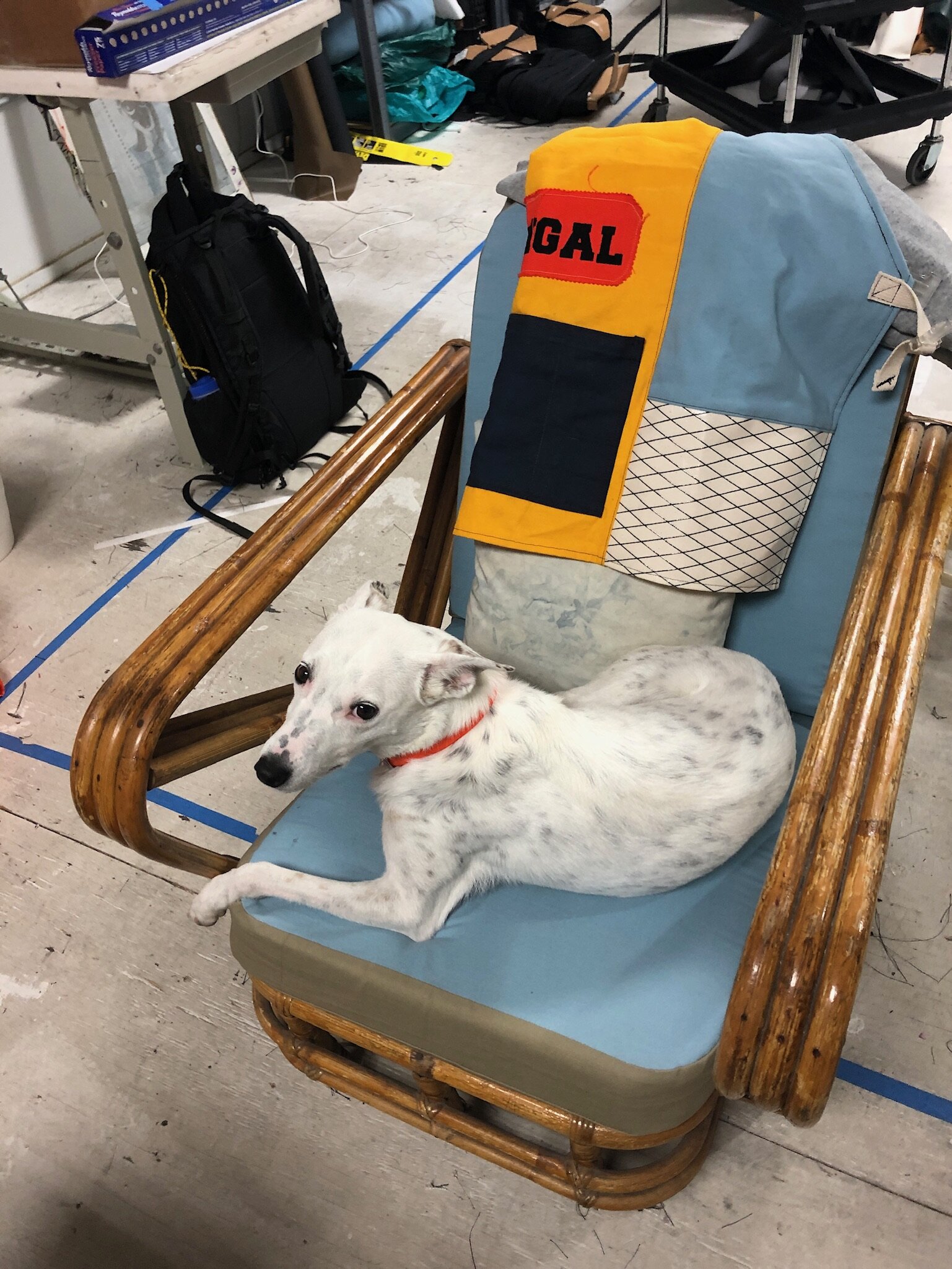
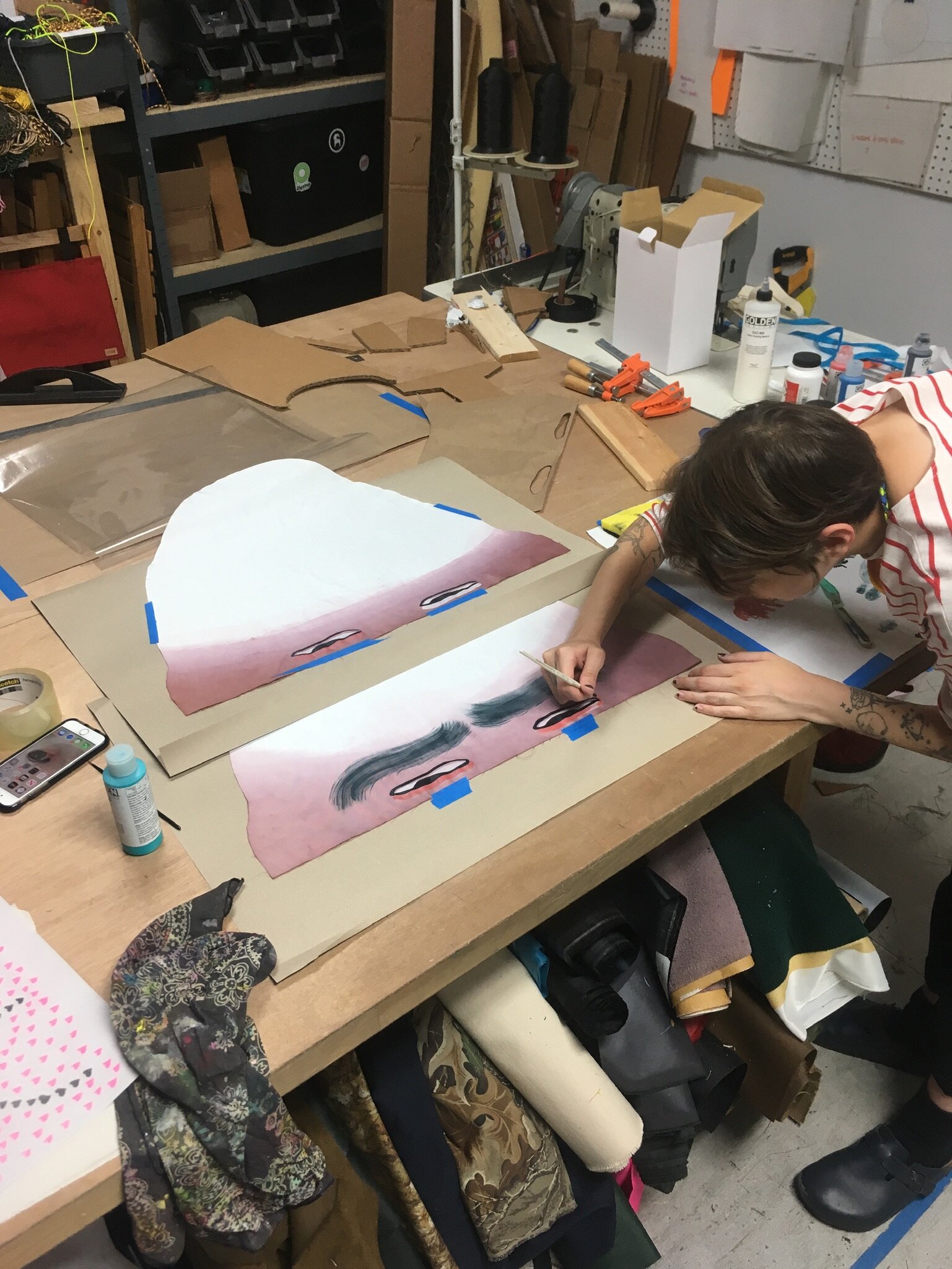
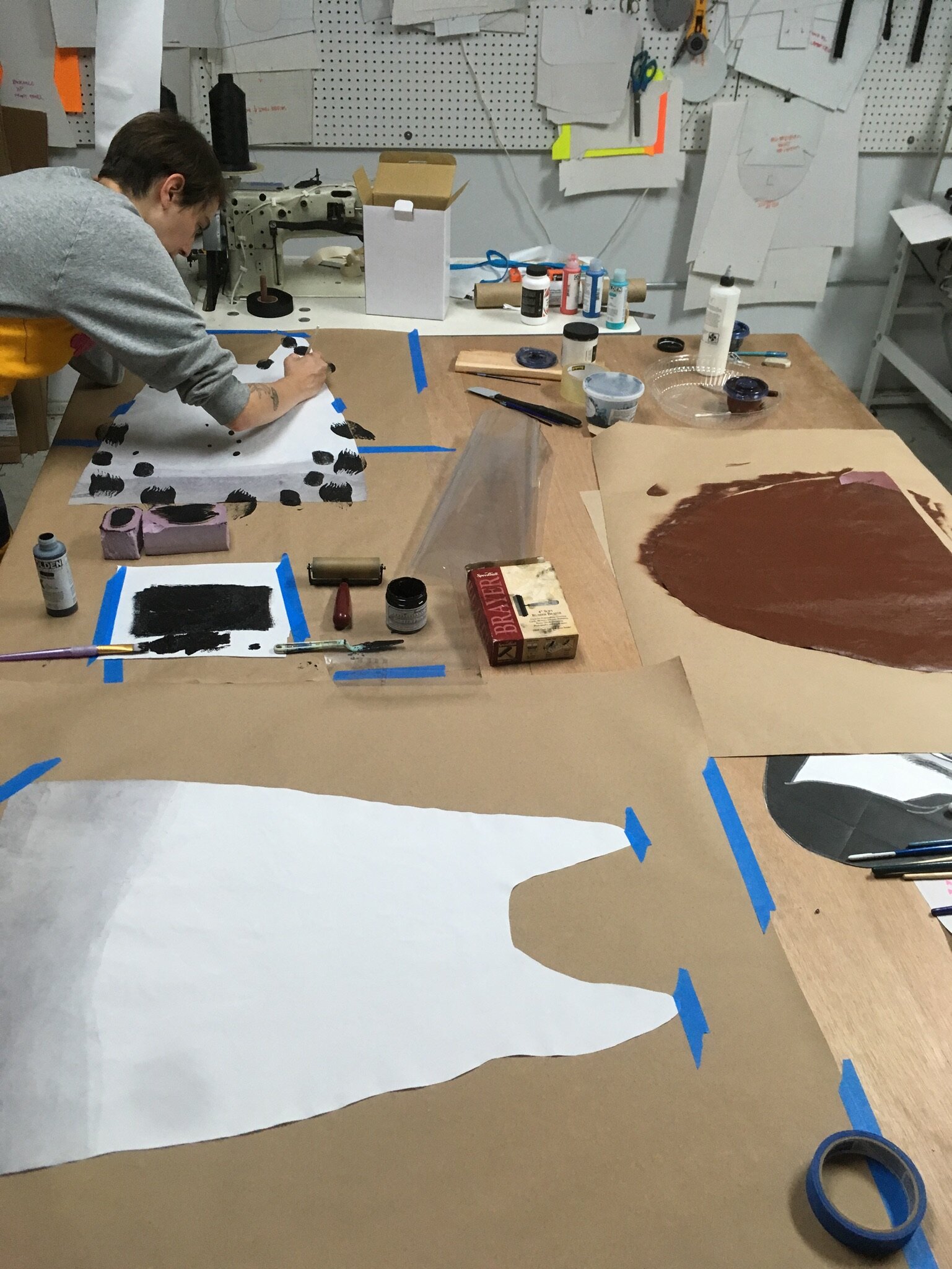
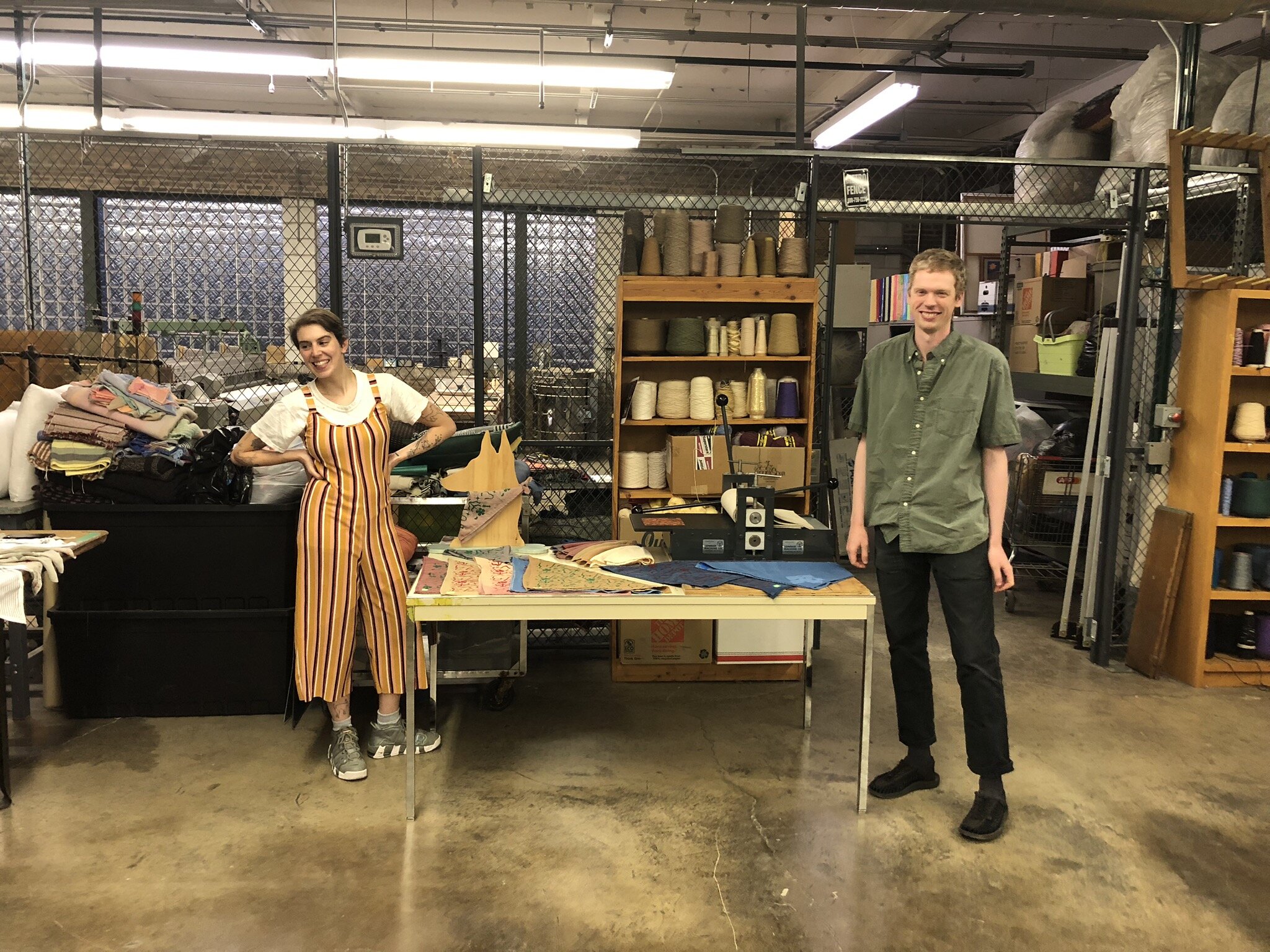

STUDIO WORK
Phil and Alyssa approached their residency as a space for experimentation in construction and technique, while maximizing the use of existing/recycled materials from their own studio, TWM, and The Waste Shed, a Chicago creative reuse center. During the residency, they were able to make the following series of objects:
Bandanas cut and sewn from recycled thrift store linens, dyed with natural colors, and printed with repeating pattern from a carved relief block on The Weaving Mill’s miniature printing press. This was the collaboration’s “product”; a repeatable, sellable object which is an important economic part of Phil and Alyssa’s practices.
Three sculptures of heads from salvaged insulation foam and naturally dyed, stamped, painted, and screen printed nylon. Alyssa has been making these sculptures out of wood, this was an attempt to get the same effect using textiles.
A small “friendship quilt” made from offcuts of the Westtown artist’s apron project, and scraps from our dying and printing experiments from the sculptures and bandanas. The materials found in the quilt and its placement in the center of the studio space during the opening was intended to ground the other objects in reality, and within the space they were being displayed in.
WORKSHOPS WITH ENVISION UNLIMITED
Phil and Alyssa spent their time with the artists of Westtown designing and fabricating custom workshop aprons. Keeping both fashion and functionality in mind, each apron was completely tailored to the wearer’s desires and needs. In the workshops, Westtown artists mapped out the intended uses of their aprons, then designed and constructed the components of the aprons using recycled, surplus, and re-used materials. The artists made a plethora of pockets, each intended to hold very specific, personal items and selected their placement on the aprons. Cord was braided for straps, name tags and flair were created with fabric paint and iron-on patches, and it was all attached to fabrics selected by each artist. The project concluded with a fashion show and celebration!


